So, let's have a wander through the area I refer to as my vege garden - there's quite a lot to it, so I'll leave the greenhouse and other parts of the section for another day. Follow me.....this gate to the garden area is just a few metres from the door to the house. My daughter and I build this fence, arch and gate 3 years ago, to keep dogs, chickens and later ducks from the garden. The banksia rose on the high side to the left is very lush - it started out as a bedraggled nearly dead bargain plant from the garden centre.
| The entrance border (below) is planted with love-in-a-mist on one side (about to start flowering, and candytuft, dwarf phlox, and some extra dwarf beans on the other. Three zucchini plants (right) are now producing well. The two blue bins are planted with: "Chloe's Surprise" climbing Novella peas on one side, drying out now so I can save the seed, and Moonflowers which I've just planted in the near bin, where they will climb the trellis arch made from an old ladder. And along this fence (below) is quite a variety - another zucchini, a big patch of cosmos (just starting to flower) under a triple-grafted apple tree, a patch of calendula, 4 tomatoes against the trellis on the fence (not tall enough to see yet), a lemon tree, two lemon balm bushs, some dahlias, a carpet rose, a pomegranate in a pot, and a few other flowers. | Bordering the path is a row (above) of much-used perennial culinary herbs - chives, rosemary, oregano, pizza thyme and common thyme |
| This year I've planted my upcycled arch/growing frame with cucumbers on one side, and buttercup squash on the other - which I will train to climb up the sides. Not where I was planning to plant the squash, but I'm running out of space, and they desparately needed planting. Behind those are planted some globe artichokes (below), mulched with sheeps wool/dags. | Next (left), the yacon, a south American root vegetable which grows as a perennial and produces abundant, sweet tubers which can be eaten raw or cooked, or boiled down to make a sugar substitute. They are bordered with a row of calendula, with a dahlia in the front corner. The low-growing polyanthus along the front edge have finished flowering for now; they are pretty and purple all winter long. The yacon plants will reach heights of around 6 feet before producing tiny, sunflower-like flowers at the tops of the stems, and then dying off when the frosts get them. |
| To the other side of the entry path (right) is a tangled mess! Silverbeet from last season, gone to seed and then blown over by the gales we've been having, it is draping itself all over the damson plum. Self-sown parsley now going to seed again has taken over the rest of the space. Between the two, the spring onions and scented geraniums are pretty much hidden. Clearing out this section of the garden is high on my next-to-do's list. | At the end of the path, where it divides in different directions, is my berry patch. Facing us (left) is a trellis for boysenberries. I got part way through training the vines up it in winter, and never finished, so it's a tangled mess at the mo, but plenty of berries. Looking at the patch from the side (below left), you can see all the raspberries behind the boysenberries. These have finished fruiting for now - there will be more in autumn - and needs a good clear out. Lemon verbena grows at the corner of the raspberry block, with soapwort underneath (below). |
| The next bed along has a flourishing crop of silverbeet and perpetual spinach in one half (right), though currently a bit wind battered, and the other half is newly planted with longkeeper brown onions. The onions were started as seed in my greenhouse in late Sept, in extra deep seed trays. Ideally I would have done that in July, but this year that wasn't possible. I grow the seedlings on in the greenhouse, and plant out in December. This seems to yield the best results. The seedlings are planted out individually, by laying them down with their roots in a shallow trench, and just pulling back enough soil to barely cover the roots. Within a week or so, the plants begin to create upright leaves - as you can see them starting to do in this photo (below right). I have netting over the bed to keep off the birds, and some shadecloth, partly lifted today, which I use for the first little while over most newly planted crops at this time of year, to give them a chance to become established without having to deal with the brunt of the hot sun and drying winds, especially important for these onions, which weren't subjected to the careful hardening off process I normally employ. The last bed in this row (below) has a variety of dwarf beans planted in one half, and a couple of rogue bush tomatoes have popped up, so I gave them cages for support and will leave them to see how they do. The other half of the bed is currently empty; I have another tray of onions to plant there. |
| This year's garlic crop (right), badly affected by rust. I need to pull it, and aren't expecting great things! :-( Will have to find new seed garlic for the next crop, as none of these will be worth replanting from. Ah well. The majority of gardeners seem to have struggled with their garlic this year, thanks to a wetter and warmer than normal winter and spring. As I didn't plant these until August, in theory they shouldn't be ready until Feb, but there is no point leaving them any longer. We usually get a little rust on them, but nothing like this! |
| This last one of the main vege beds (right) has just been planted with some Samurai F1 broccoli - which waited far too long to be planted, so either they live or die at this stage, and some butternut pumpkins. I expect the pumpkins will trail over the area next to the bed, so now I've planted them I figure I have about 2 weeks to clear that area of last year's various container growing things, and weeds. |
| Let's now circle back around the perimeter of the garden... Along the back fence are three "patches" (right). The first has a pear tree, a rosemary bush and some lemon balm, but is overrun with weeds. Next to it, where the compost bins are standing, is a space that until a week ago had two raised and overrun beds I've been wanting to move for 3 years but have been in the too-hard basket! Fortunately I was able to hire a strong young helper for a few hours, and he got these out for me. Yay! Now to decide what goes there.... And at the far end is a Gala apple tree, some lovage, and lots more couch grass! It's going to be a pain getting that all out from around the tree without damaging it's roots! But it must be done! There are also lots of white alpine strawberries growing there. |
| Along the side fence, near the front of the vege patch (left), are some tyres I put there back when I first started a little gardening in 2012. They are planted with rhubarb, a gooseberry and a red currant, and very overgrown with the couch and blackberry that keeps creeping up between and through the tyres, and I can never keep on top of. I really need to get rid of them entirely, but that's another job in the too-hard basket. I should really take some cuttings of the currant and gooseberry in autumn, and then see if I can find a handy helper to do the heavy work for me! Meanwhile, I need to don some armour (against the thorns) and give them a good weeding. |
| Meanwhile, in the front corner (right), with some help from my husband and the most enormous crowbar I've ever seen (I basically can't lift it), I finally managed to get out the blackberry bush and all it's roots which I (foolishly) planted in the tractor tyre a few years ago. The tyre is now planted in crown pumpkins in plenty of compost - they can trail out over the grassy area (below), which I will keep mown until they're big enough to take over. When I was prepping the tyre, I curled some old irrigation pipe with holes in it around the rim of the tyre. Now I can water from a distance by plugging my hose into the connector on the pipe, run out to the edge of the garden bed corner you can just see to the bottom left of the pic below - this will be handy when I can't get close to the tyre when the plants are large! I've planted this patch under my second washing line with Pink Banana Jumbo squash. I hope they get a chance to do well; they are the most delicious squash I've ever tasted! A rich orange flesh with pink-ish skin, I grew my first one a couple of seasons ago, and have been meaning to grow more ever since. | The fence along the front of the garden has a border planted with blackcurrants (below). I've rough weeded it, but need to work on getting the couch out. Not sure what I'll plant here - was going to be celery and lettuces, but I think I might just sprinkle wildflower seeds and see what happens. Further along, the blackcurrants are overrun with an unruly grape I planted from as a gifted seedling a couple of years ago. (below left) |
| The Chilean Guavas in the foreground of this pic (left) are doing quite well now I've freed them from their personal jungle. I've mulched them with sheeps wool/dags, and planted some coloured alyssum under them - they're much more controlled and low growing than the rampant white alyssum I often plant elsewhere. The swing seat area behind is still in dire need of clearing. There is a stauntonia growing up the right side of the trellis, which I was toying with removing; it has now suddenly died, which makes that decision for me! A young kiwifruit is beginning to climb the right side, and the rampant grape behind needs attention. You can also just see my worm farm bath-on-a-stand in the background. This is almost full and needs some vermicast removing. |
| At the end of the blueberry area (below and below right) is a Red Bartlett pear tree, underplanted with cornflowers. Pretty and edible, but bland, the flowers make attractive garnishes for salads or meals. The blueberries are underplanted with strawberries, and I've put in some swan plants at the far end, as when I lower the nets soon to keep birds off the ripening blueberries, it will also keep Monarchs from laying too many eggs on the swan plants for them to support. I have another swan plant in a pot - I will put that out for the monarchs to lay on, and transfer a suitable number of caterpillars to the cages plants. |
| At the end of the raspberry patch is my sweet-leaved, non-bulbing fennel (right) - grown for it's seeds and fronds. It comes back year after year, quickly reaching 8-10 feet tall. However, I have more than enough seed stored for now, so I might just chop these out and mulch them to add to the compost. Opposite it is a fig in a half-barrel, which is doing very well. I intend to move it, and have contemplated planting it in the ground, but figs can get very, very big, and overall are preputedly more productive for size if kept in pots. Behind it are an orange and a manderin, also in half-barrels. |
| Wormwood (right) grown in a tyre - in severe need of pruning. I will mulch the prunings and sprinkle them throughout the hen house; wormwood is an effective vermicide and insect repellent. Well, that's a look at my main gardens currently! I'll finish off with a series of wider-angle photos of the garden to give you more of the big-picture, as well as some pics of our current batches of chicks and ducklings......(can't beat some cuteness :-) ). |
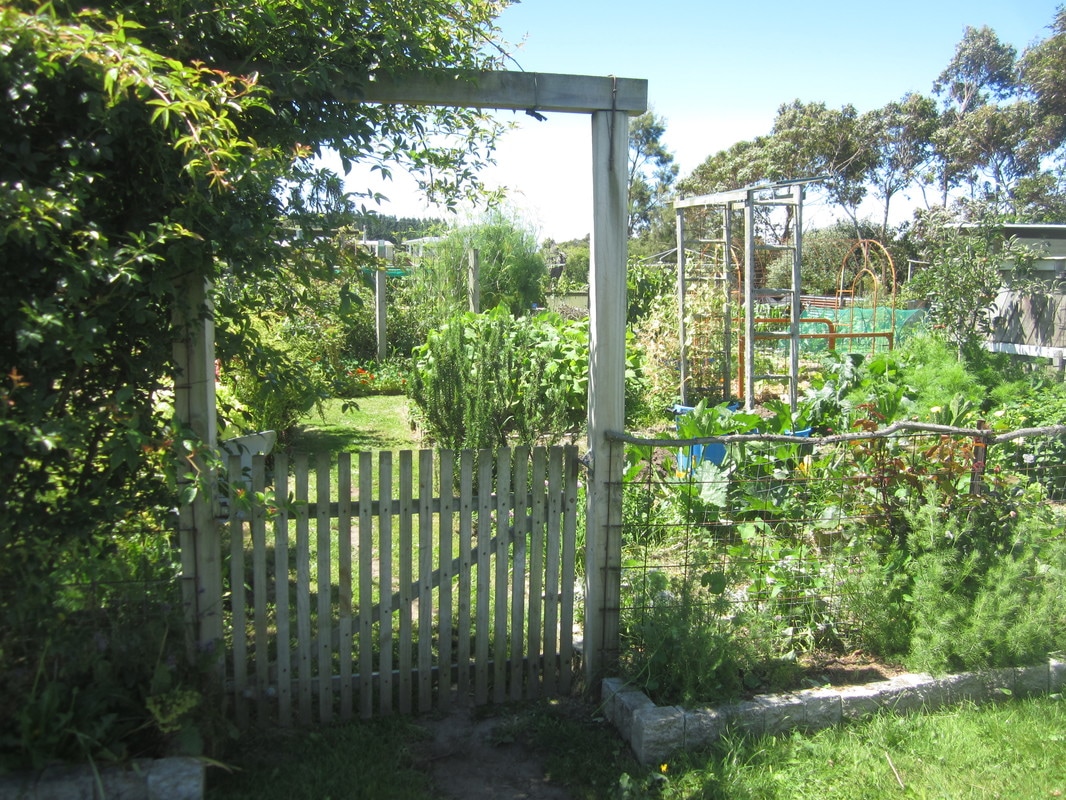
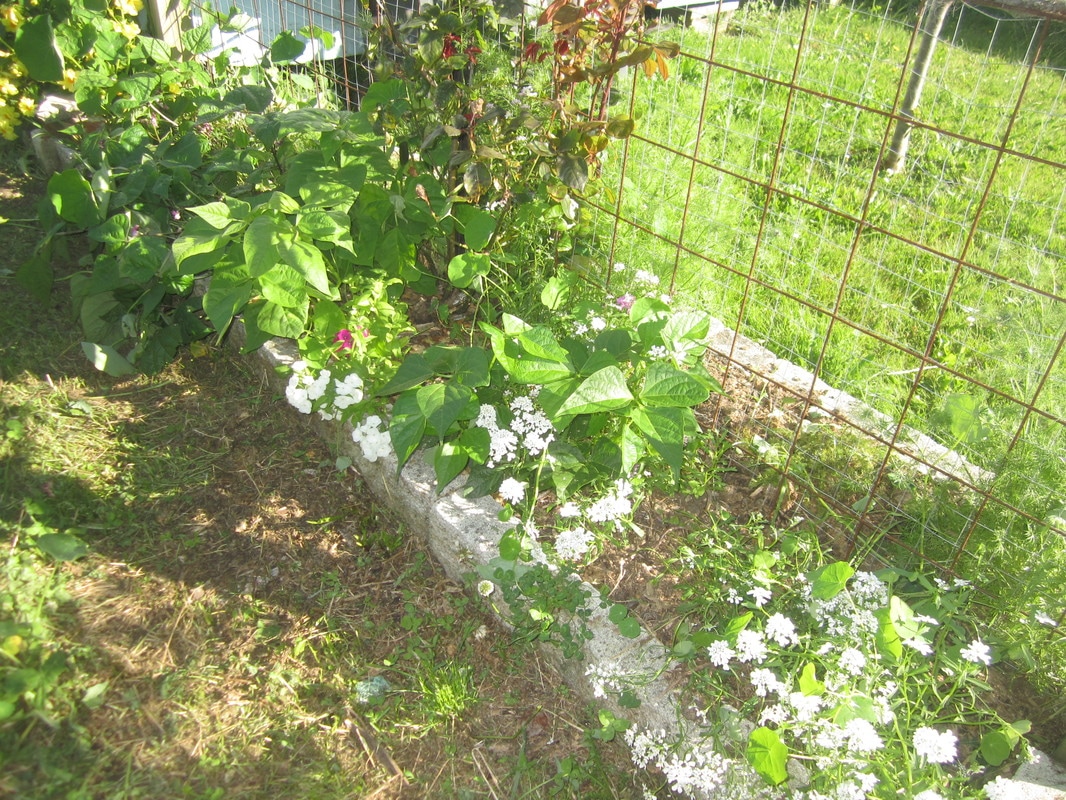
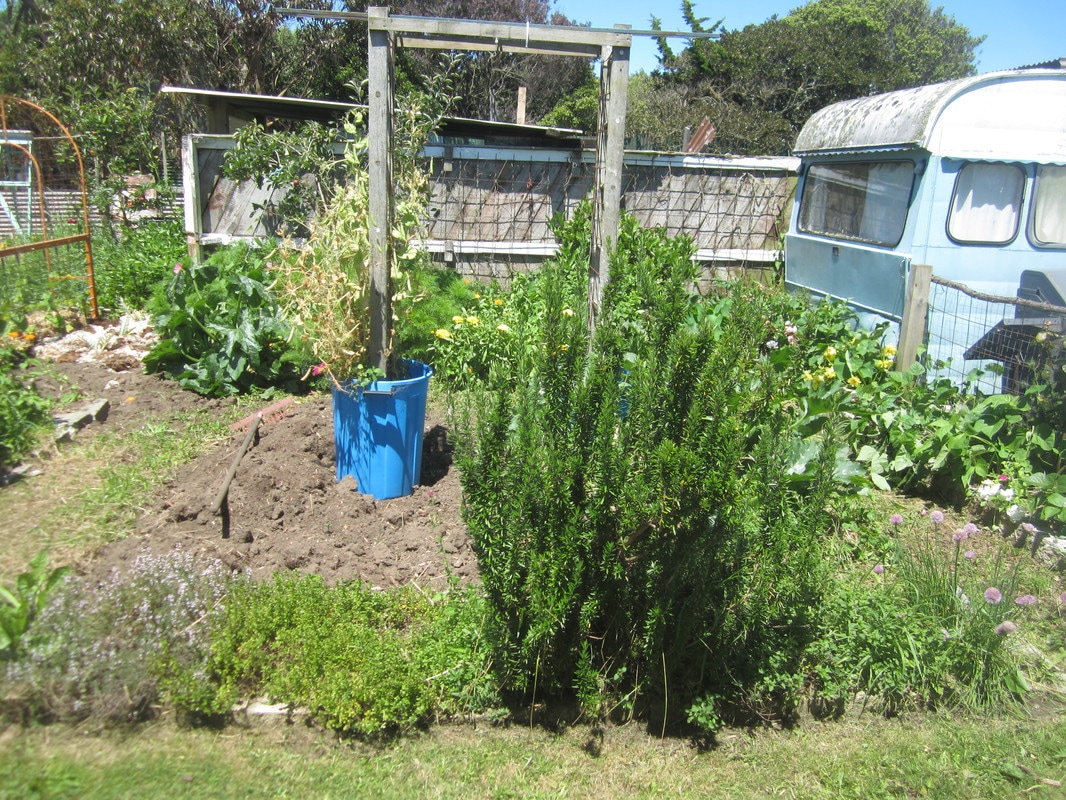
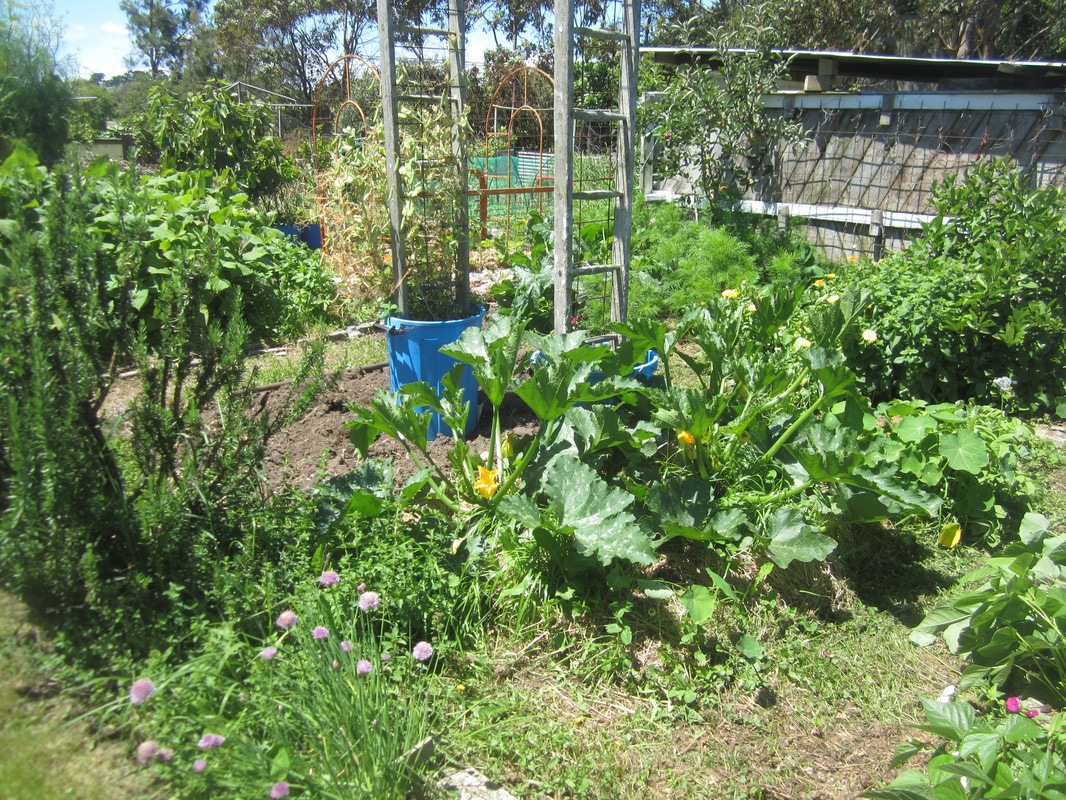
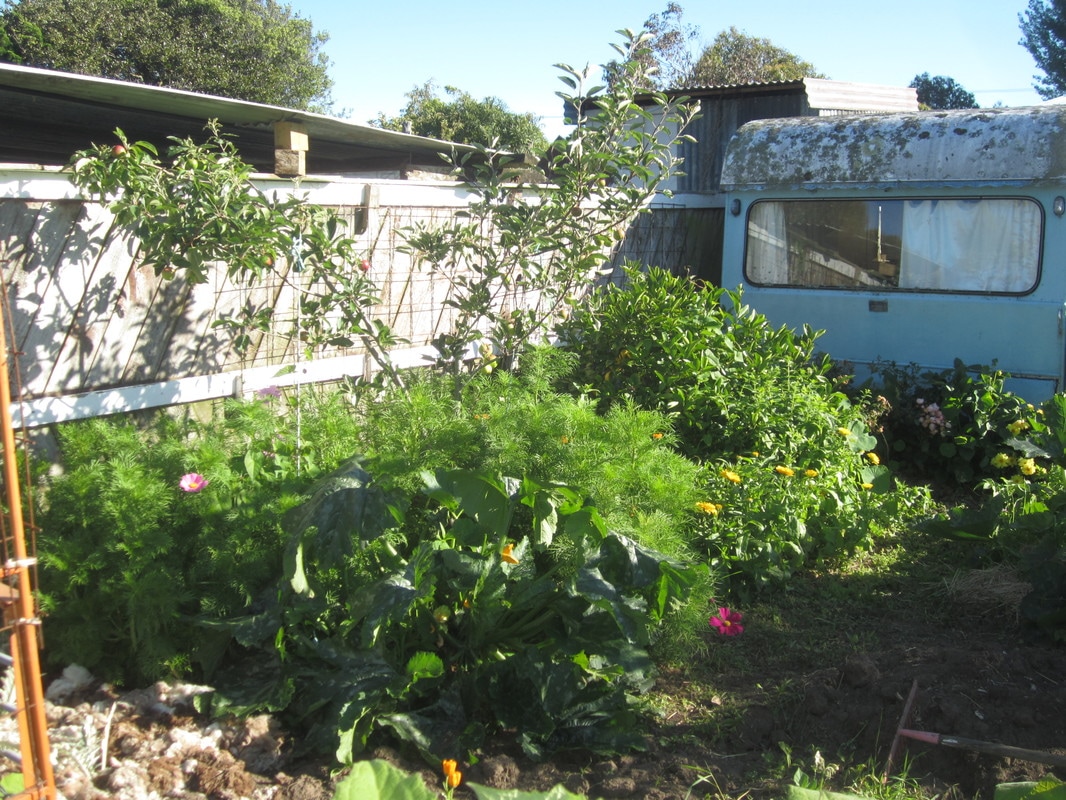
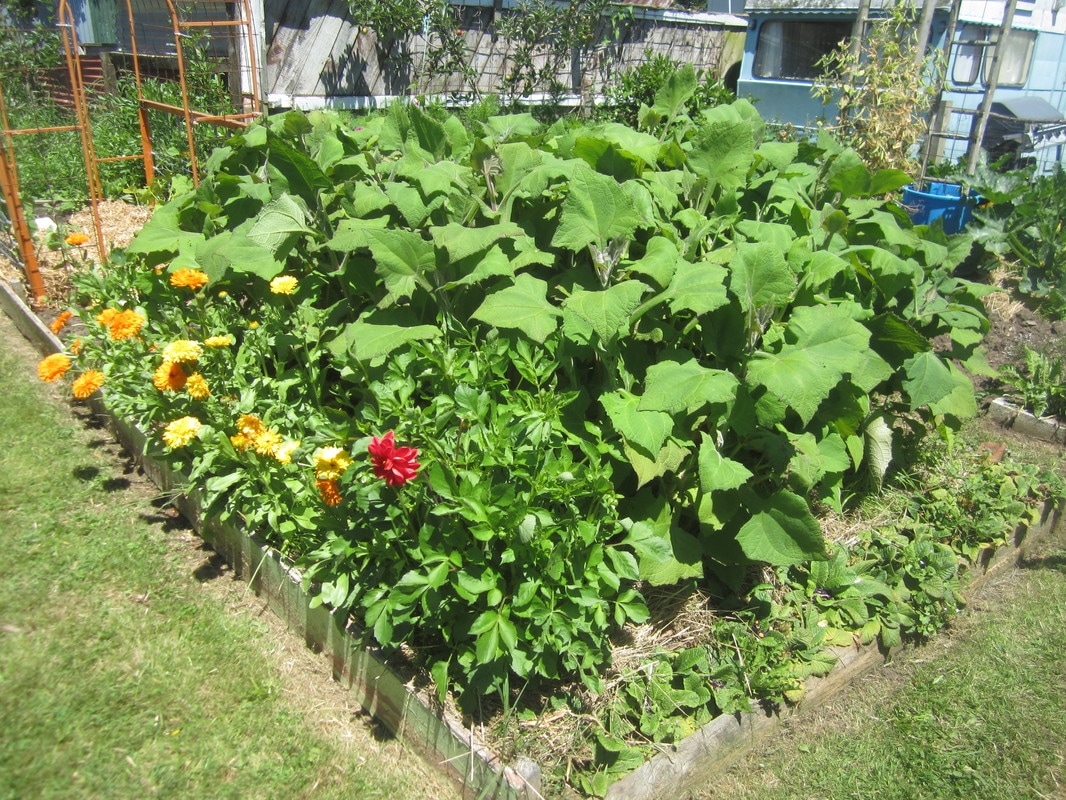
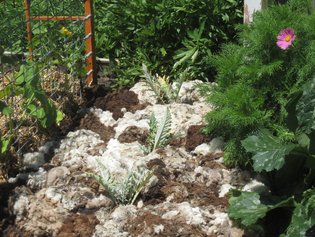
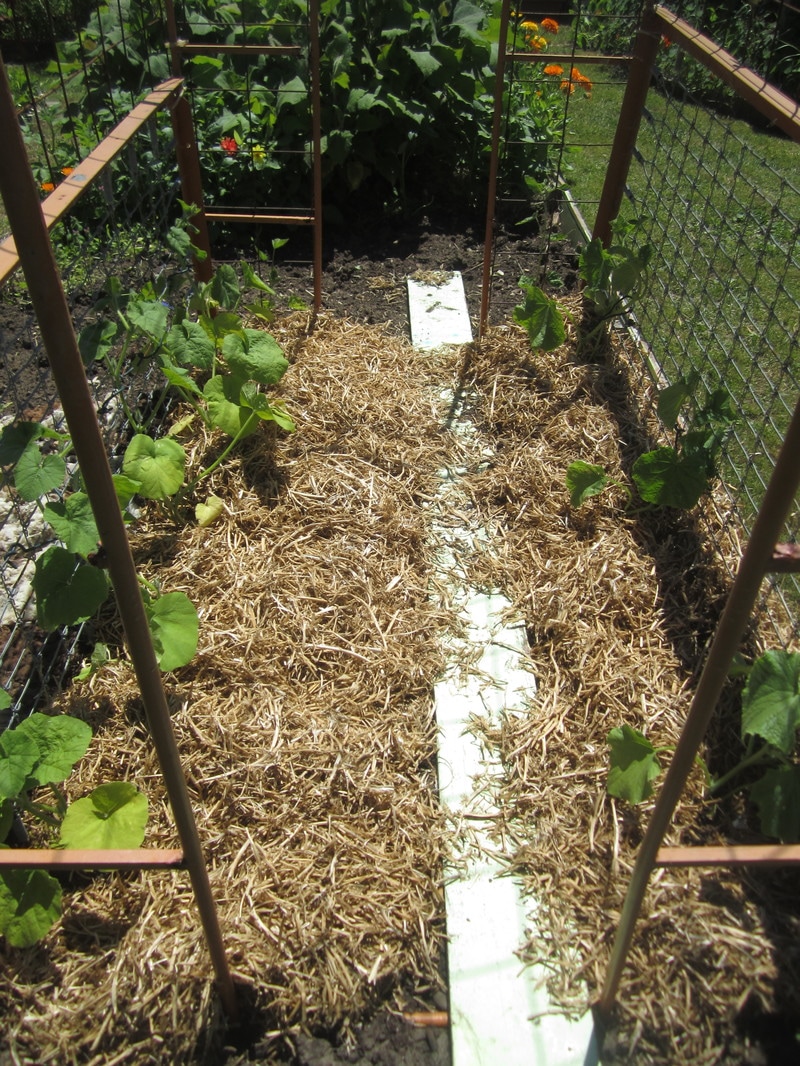
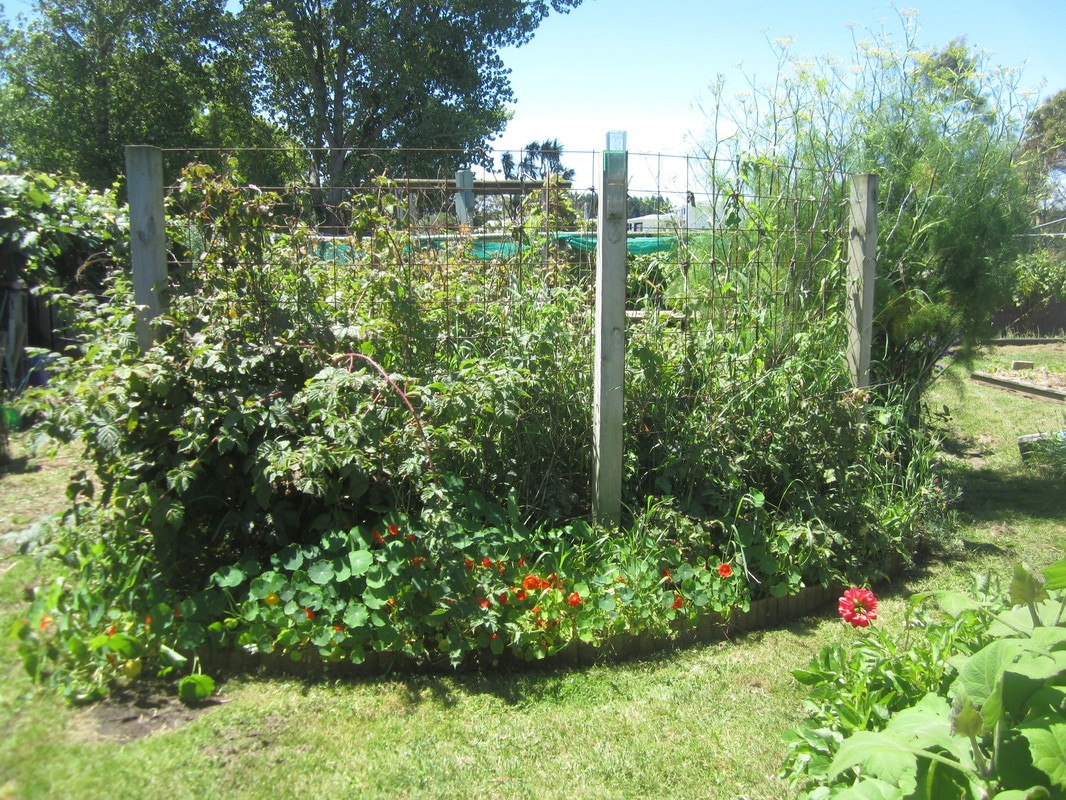
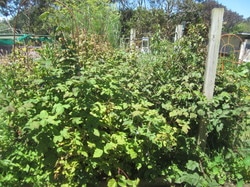
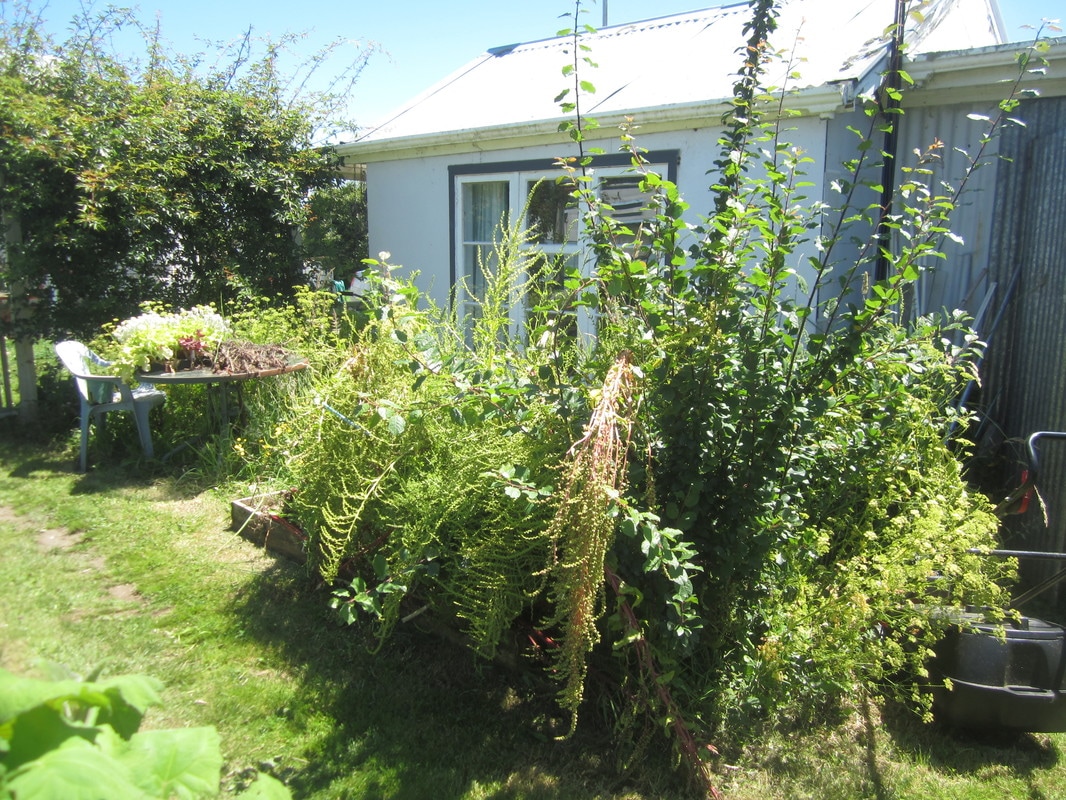
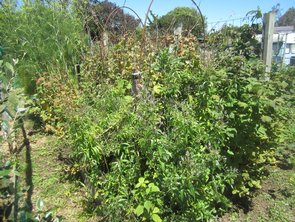
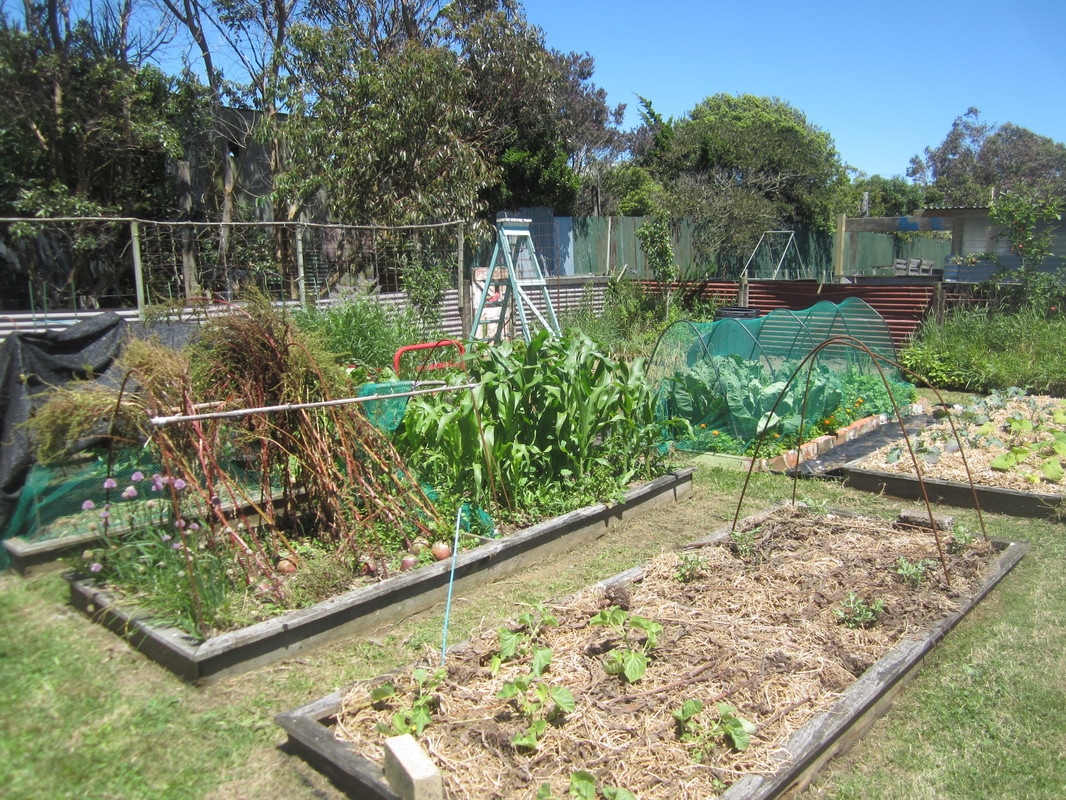
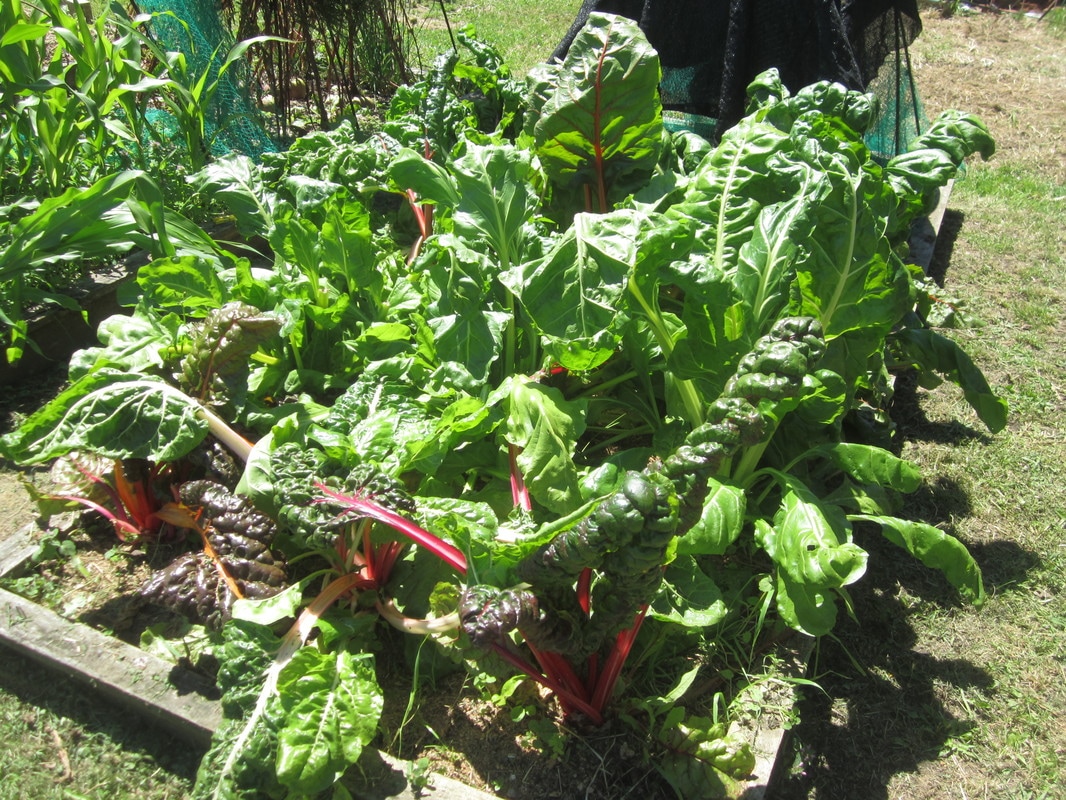
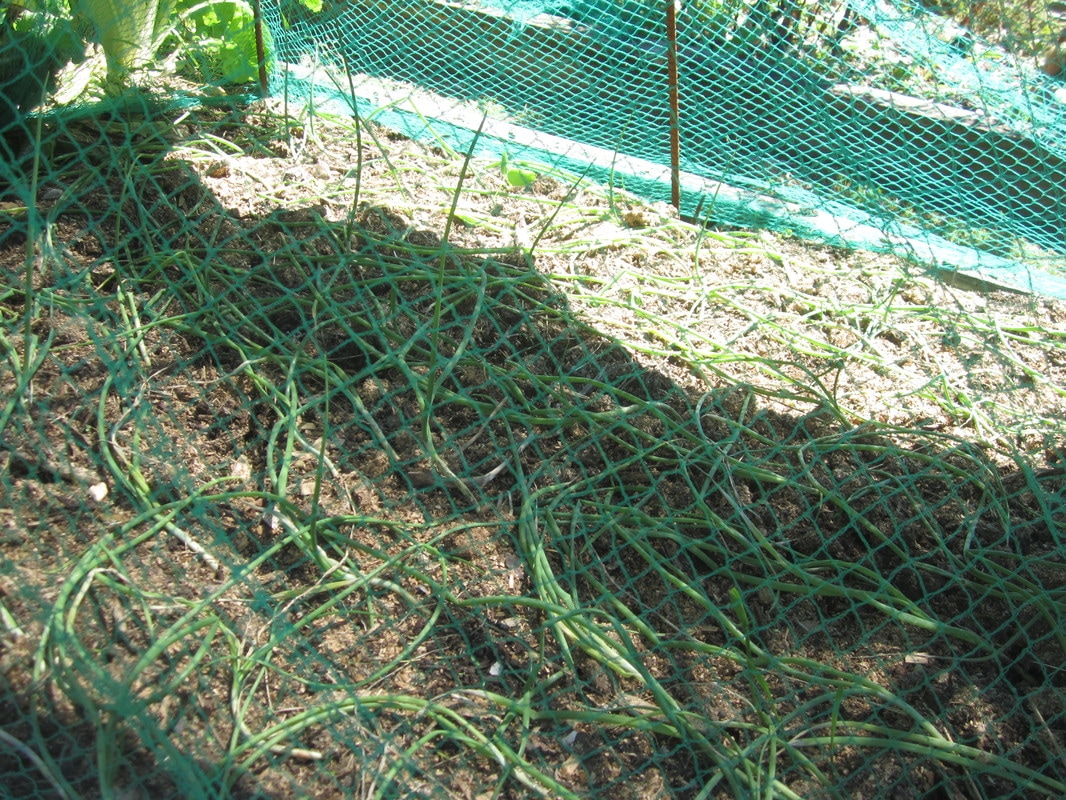
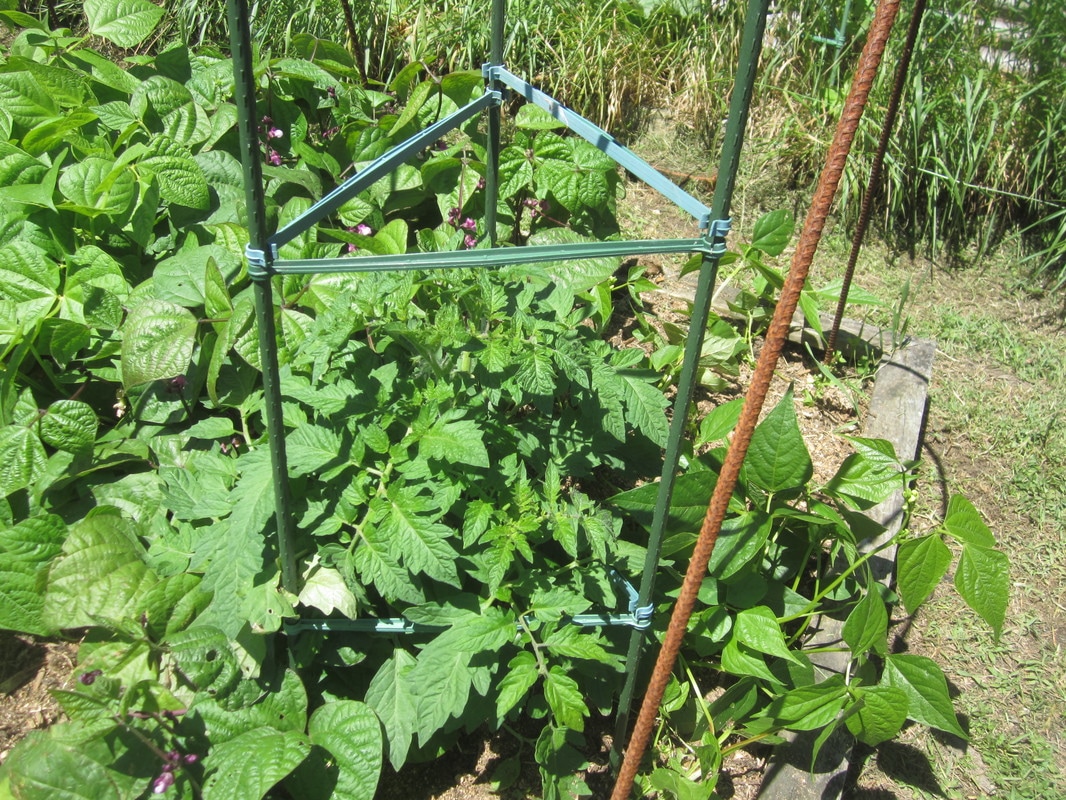
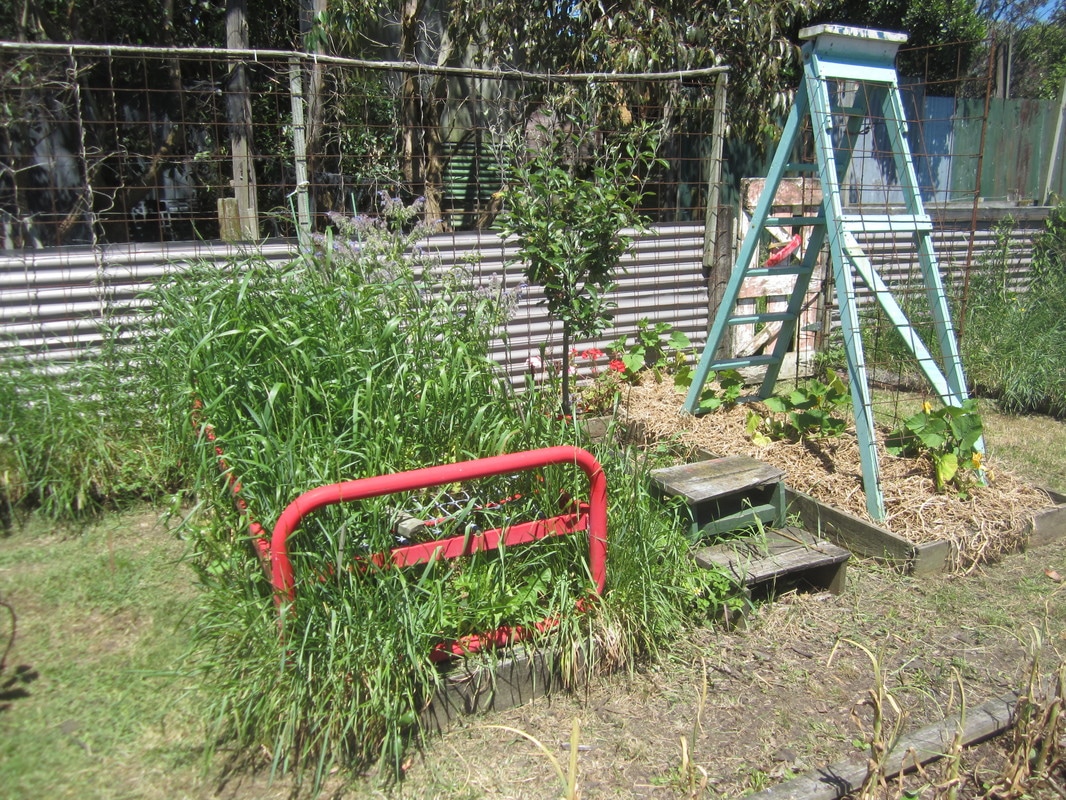
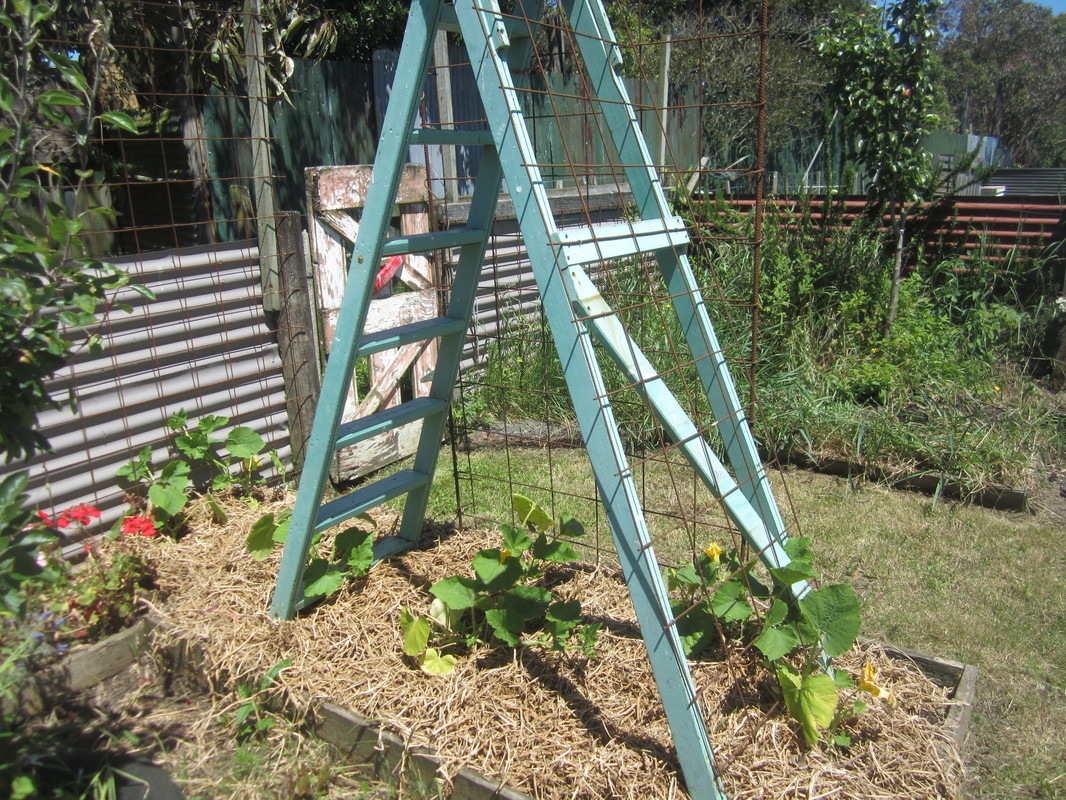
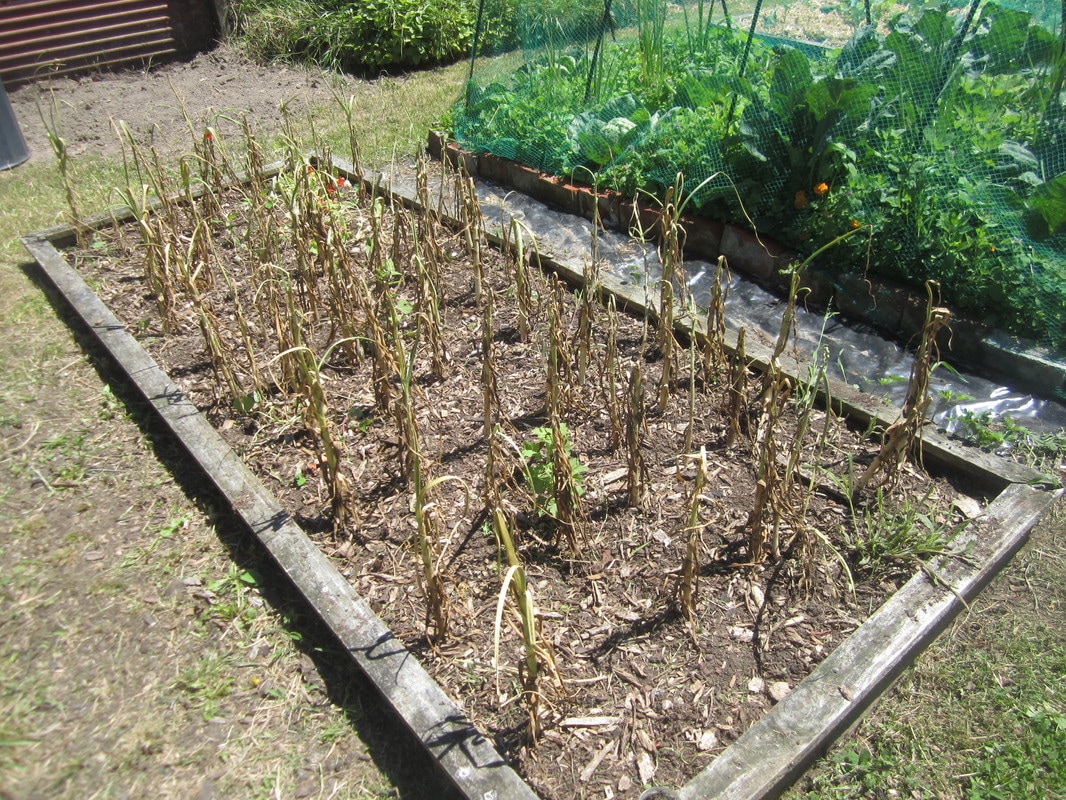
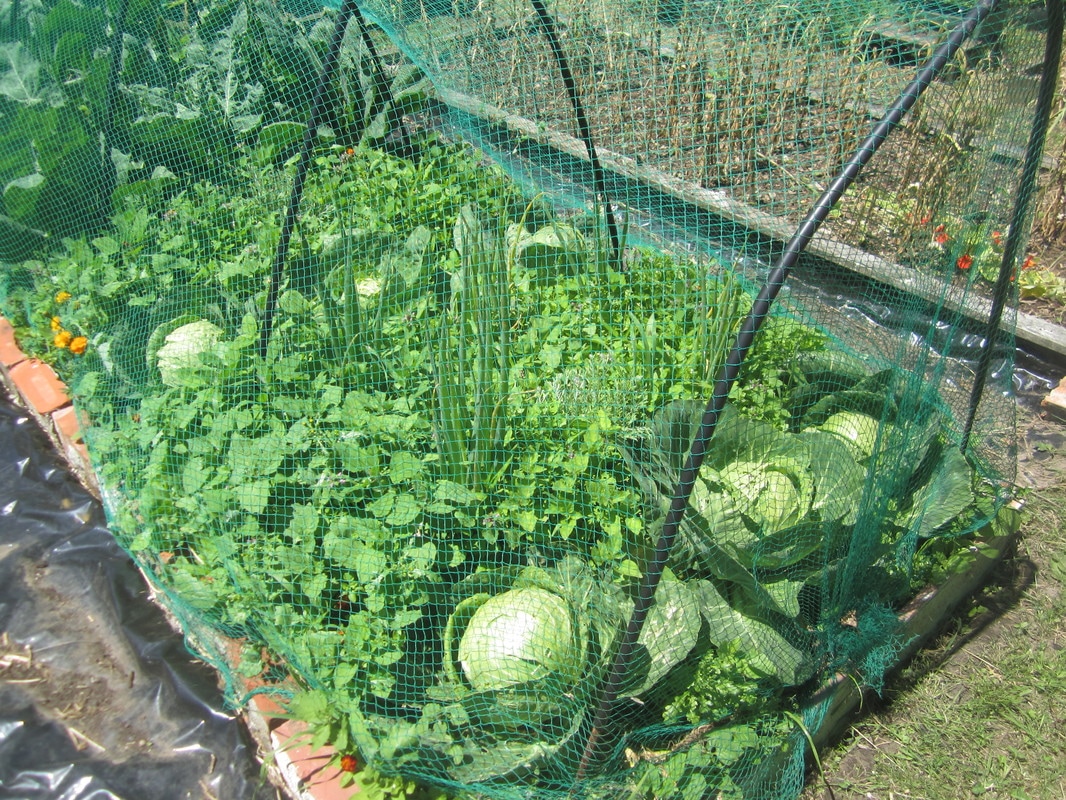
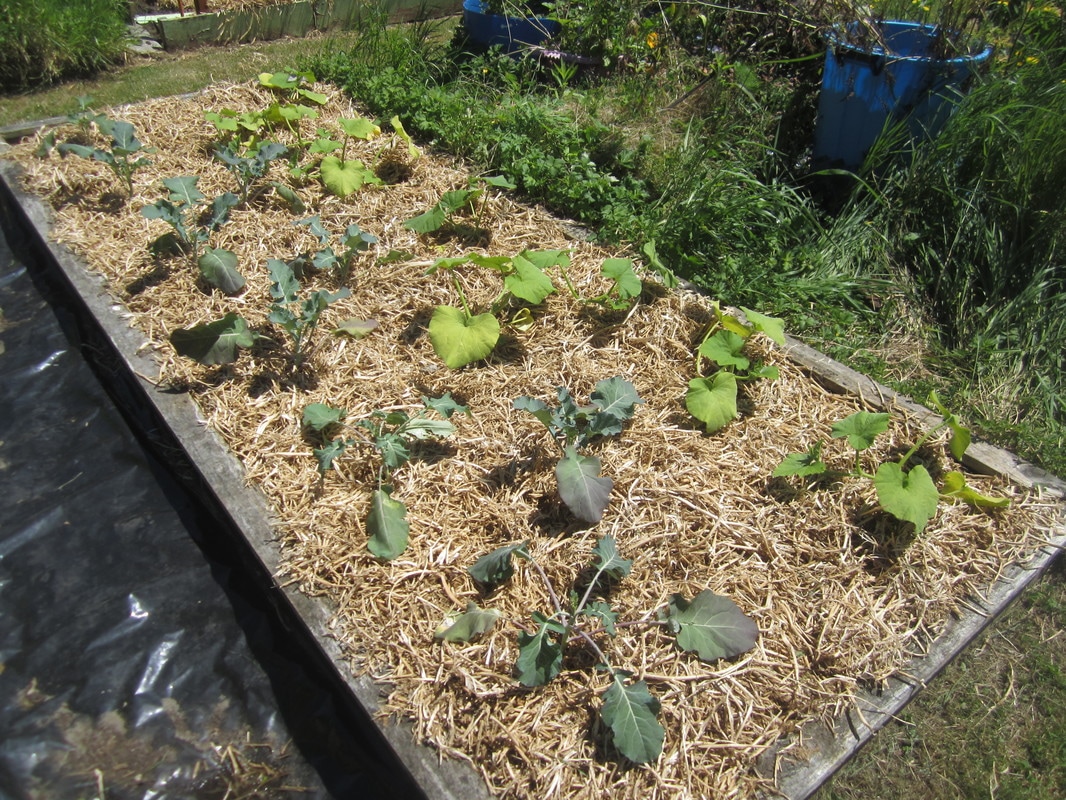
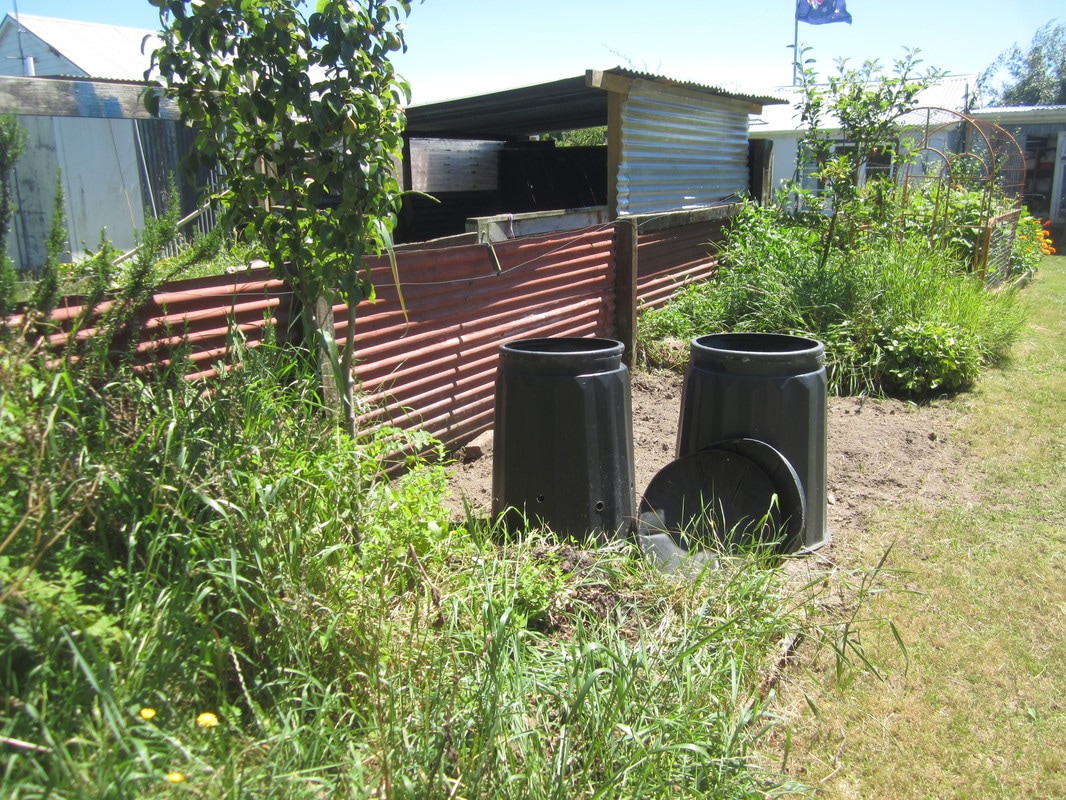
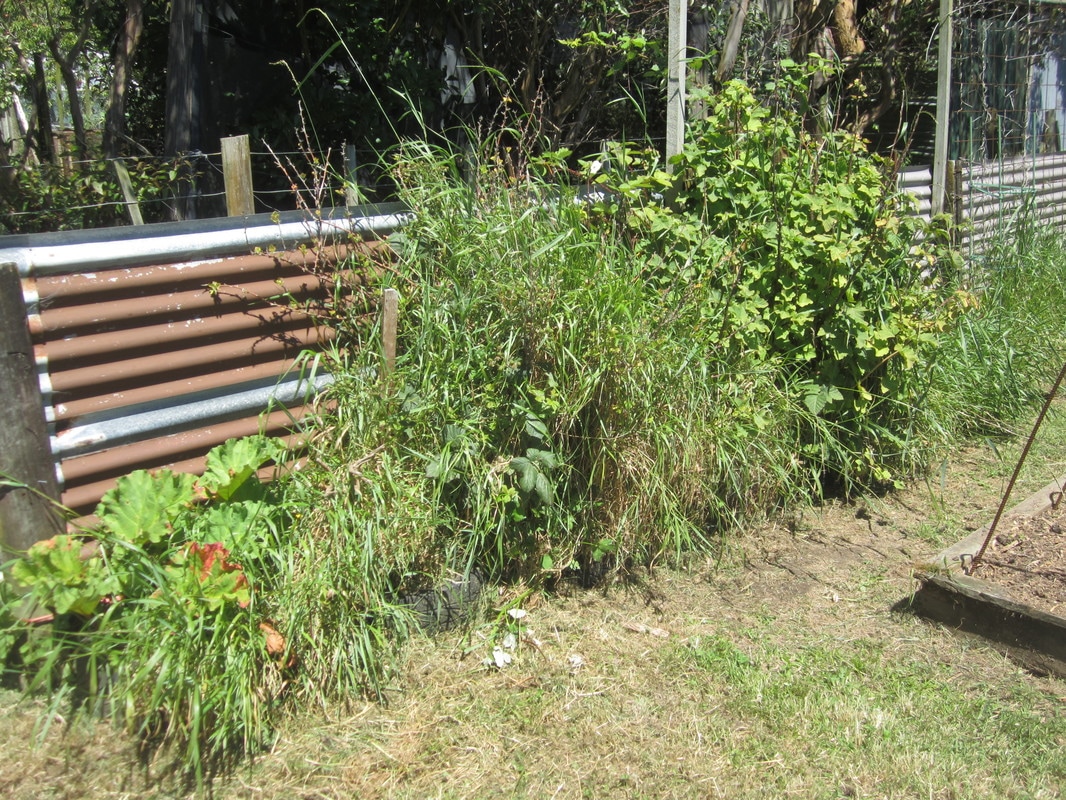
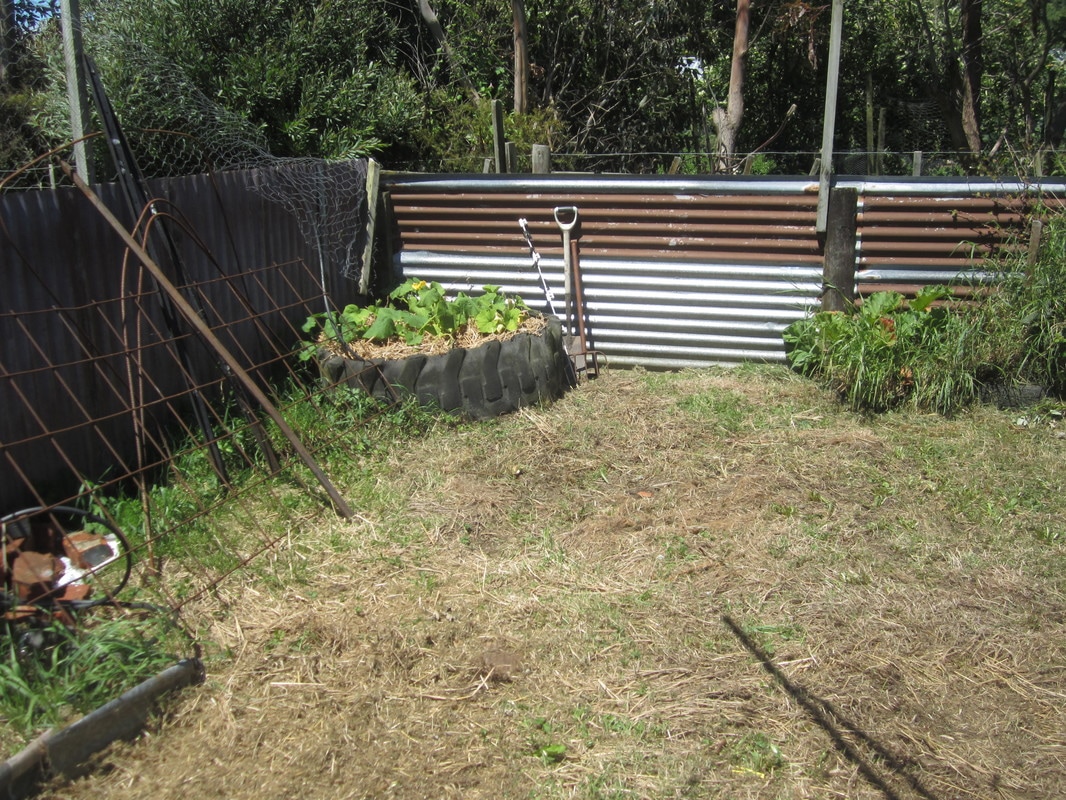
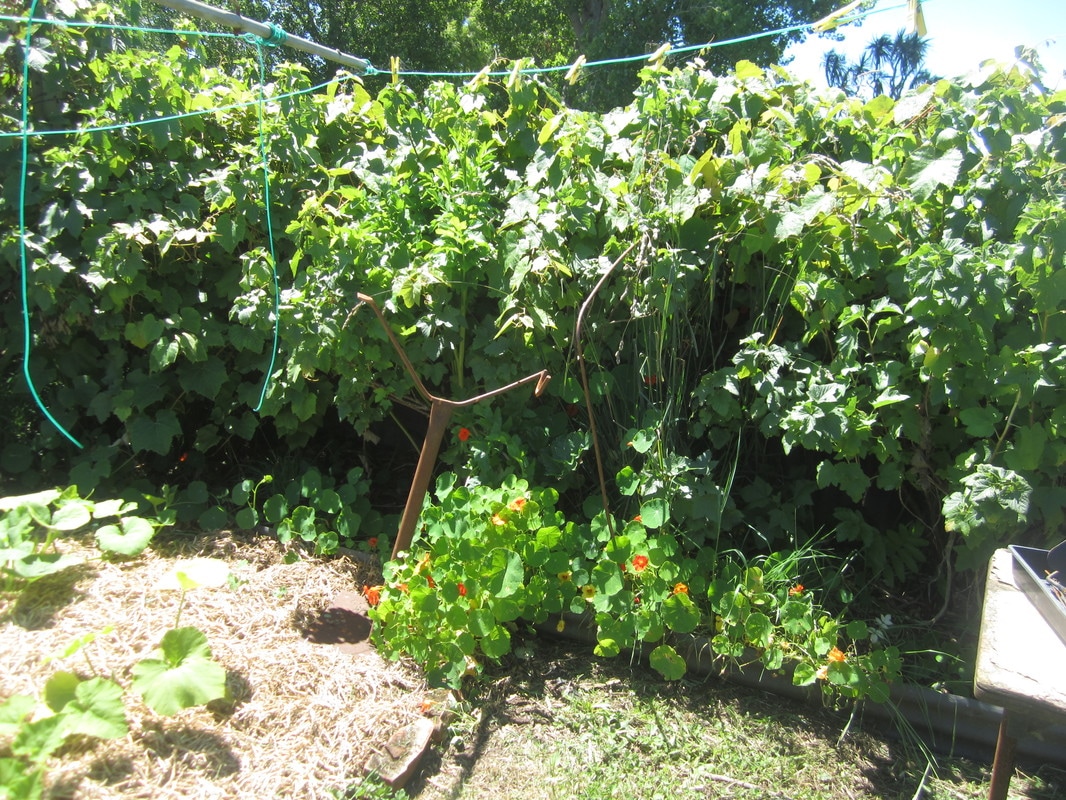
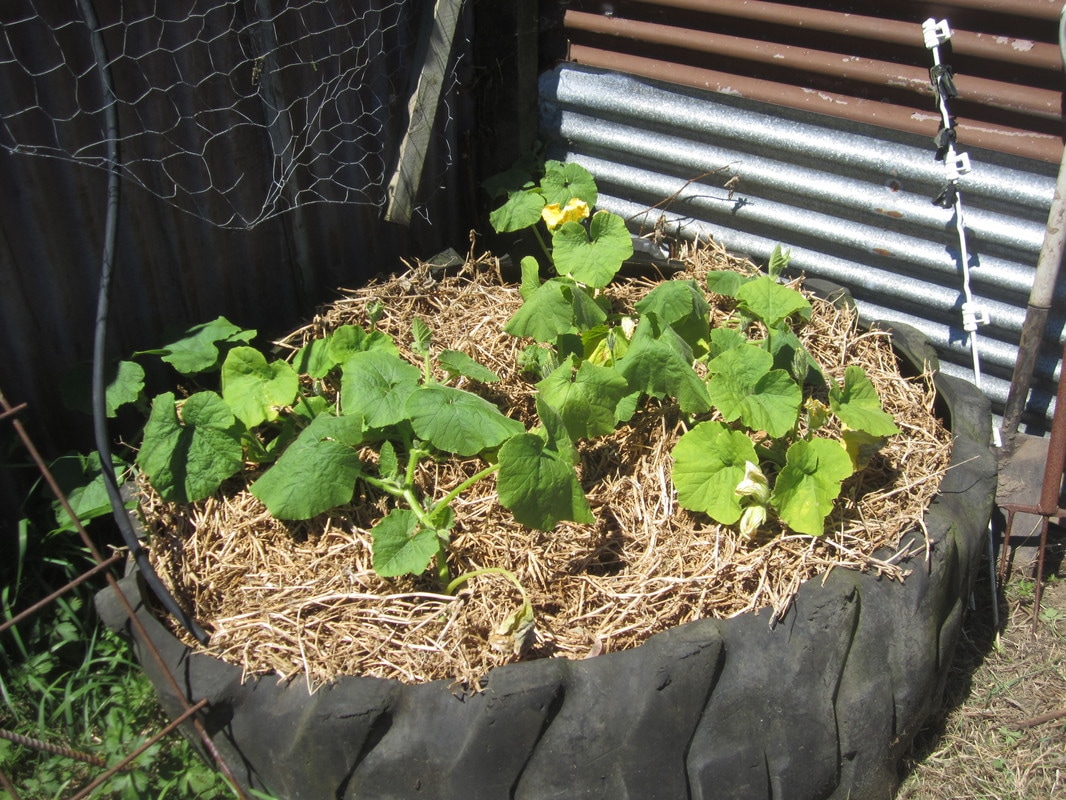
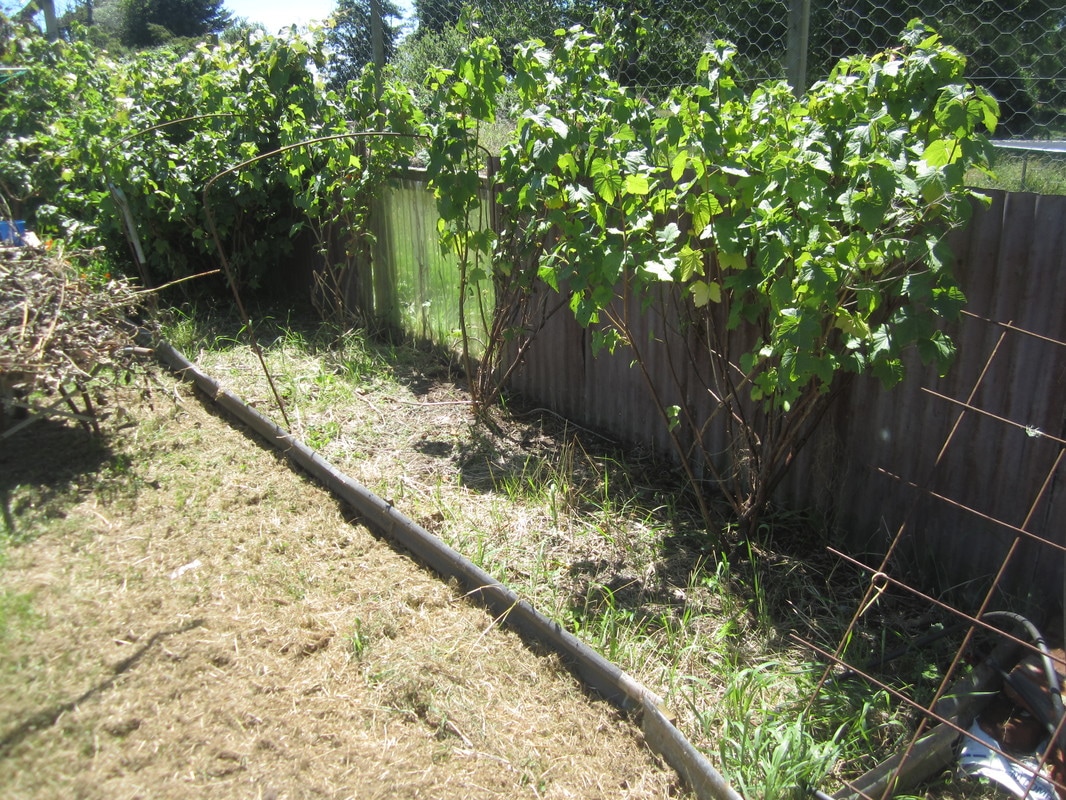
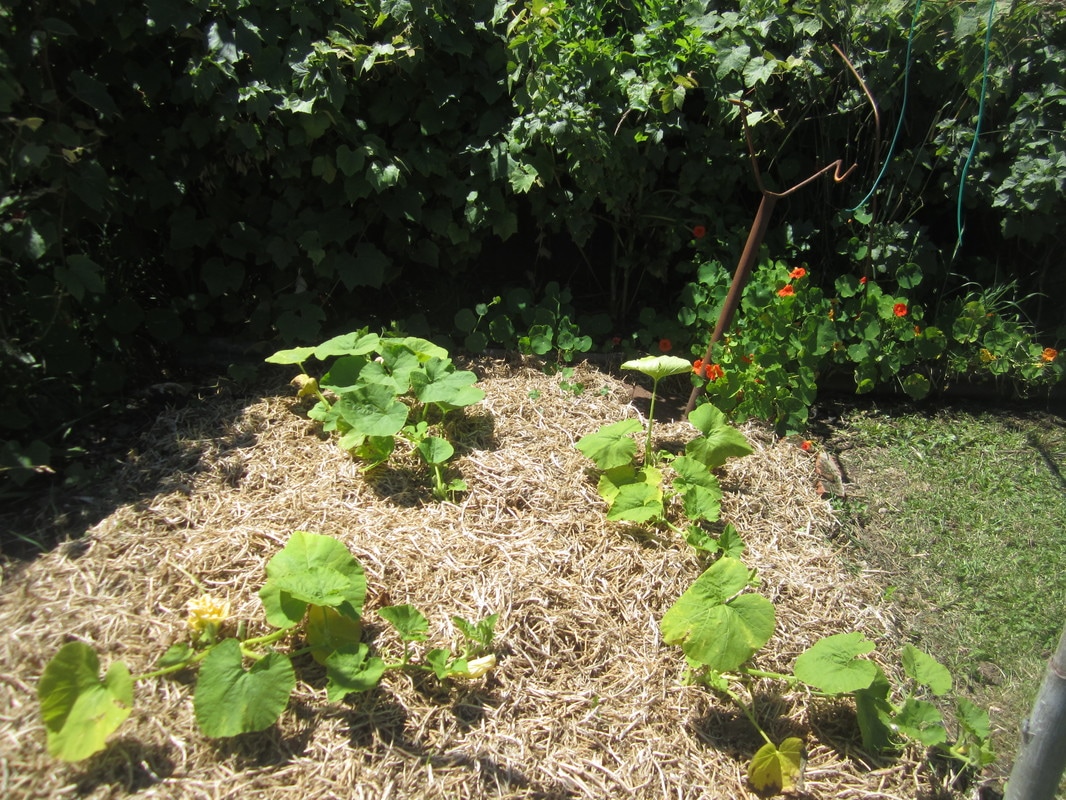
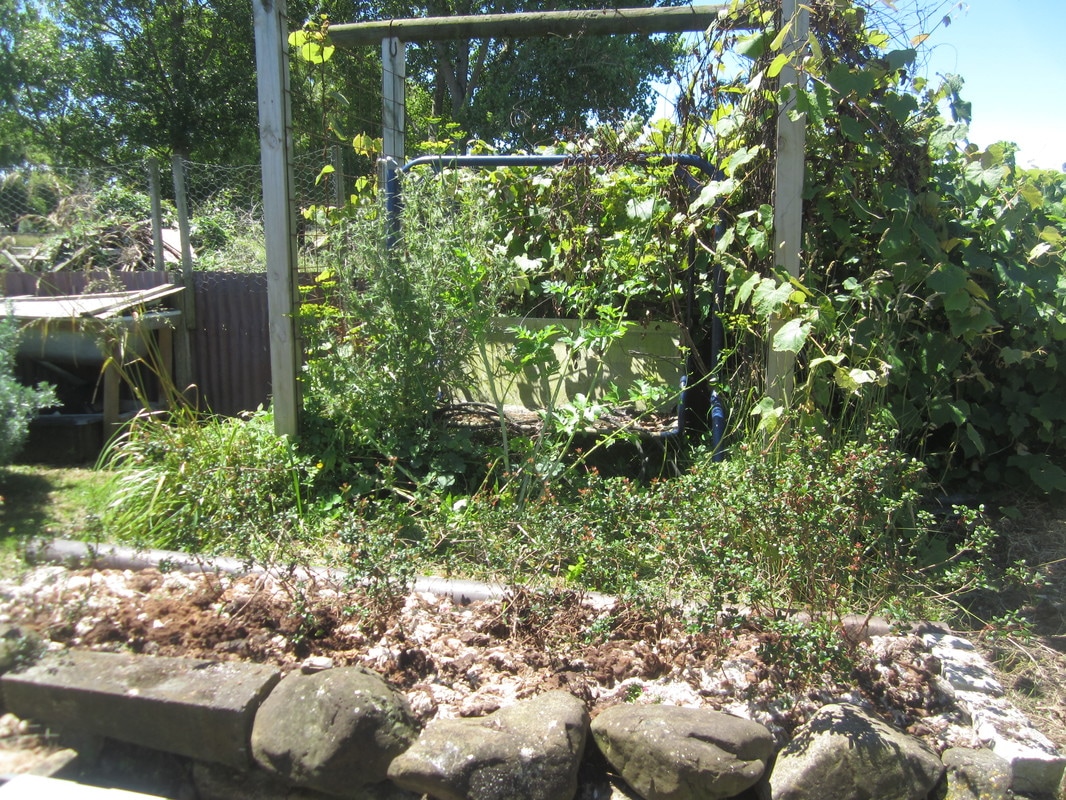
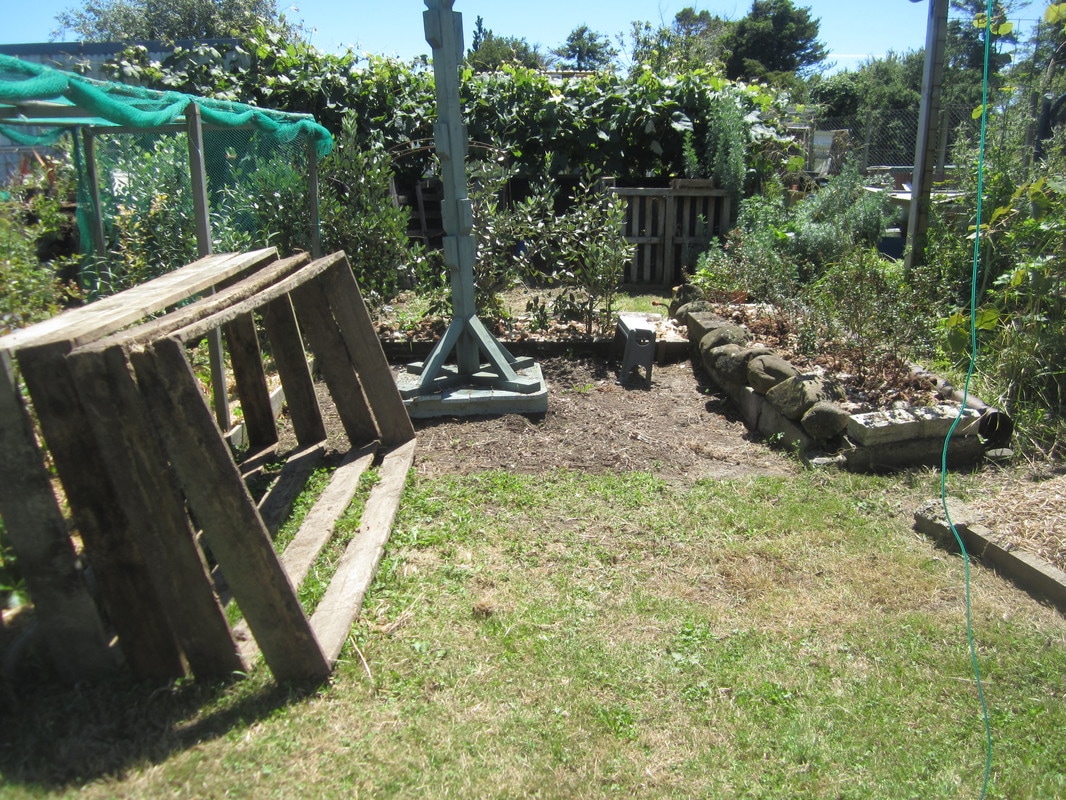
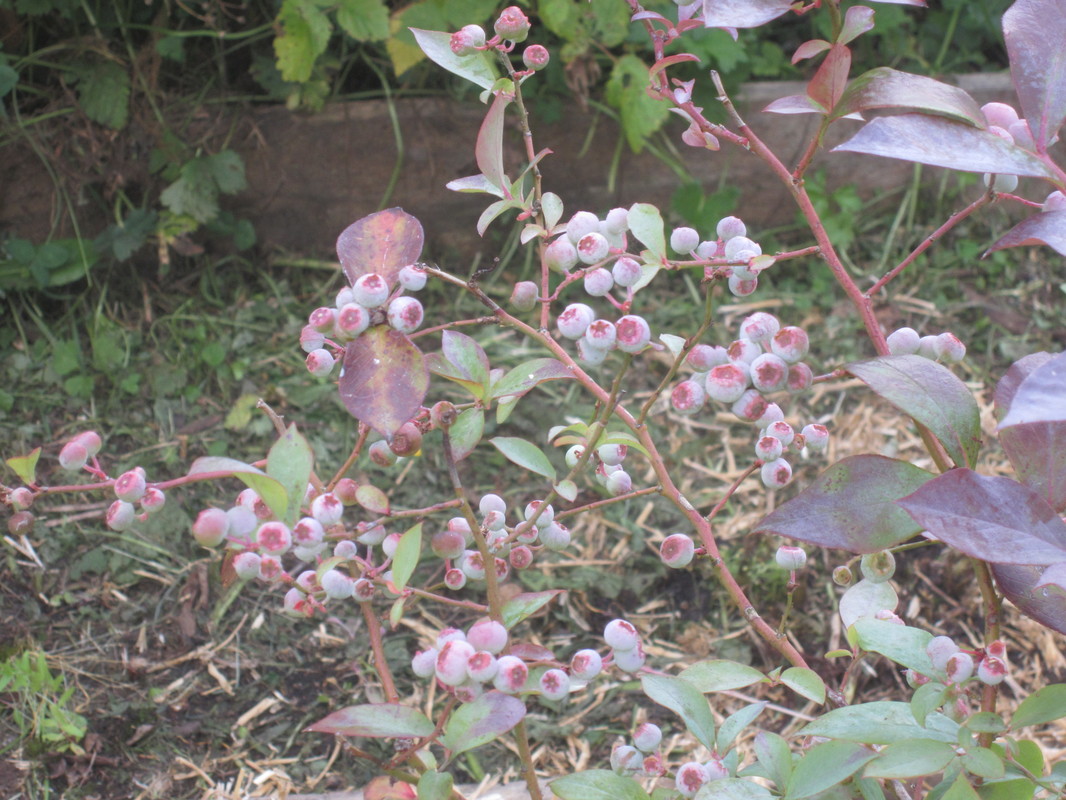
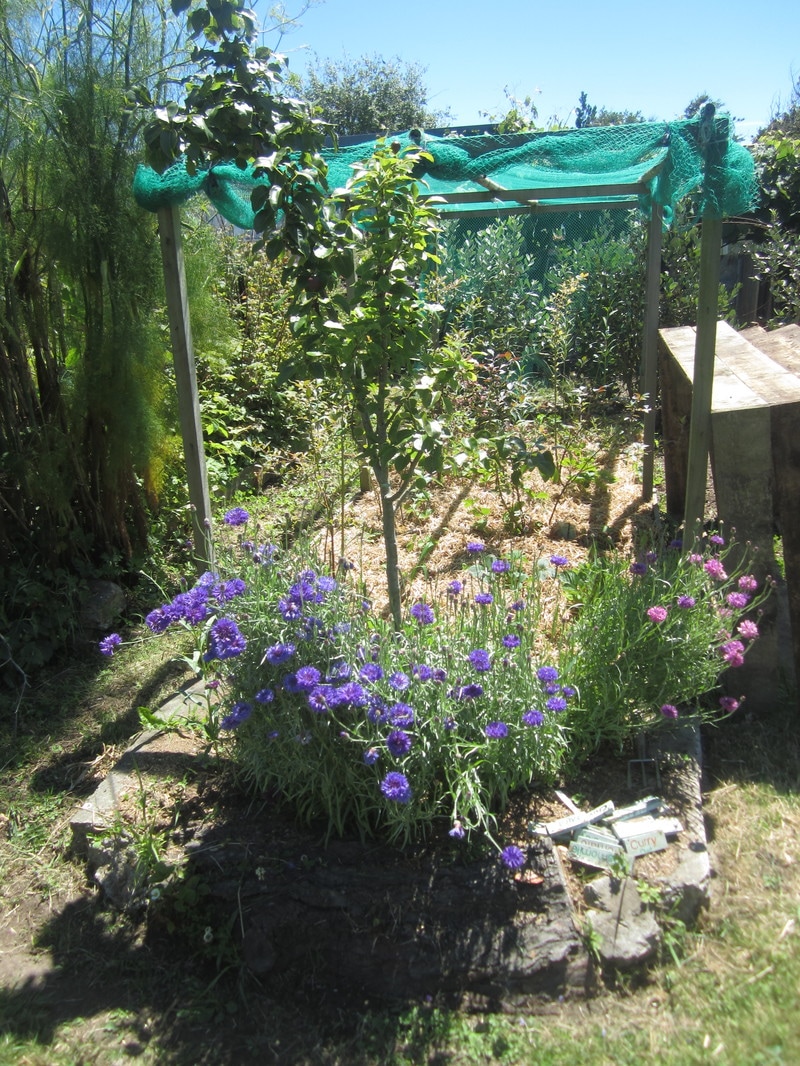
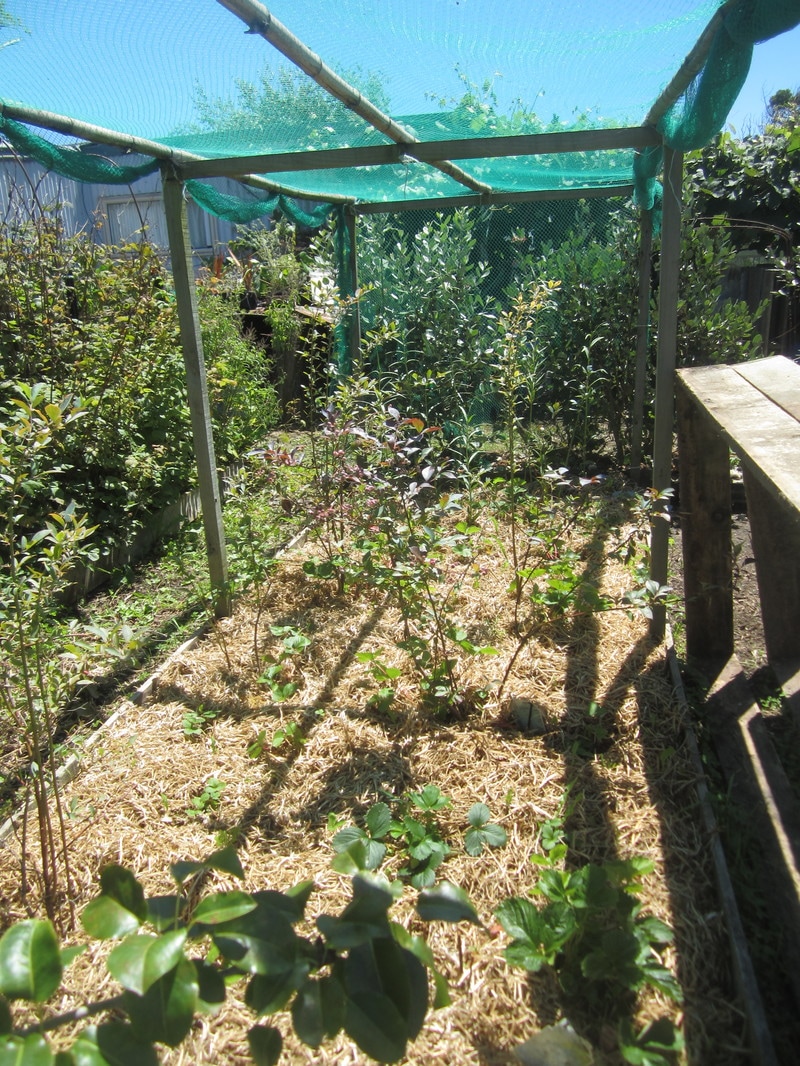
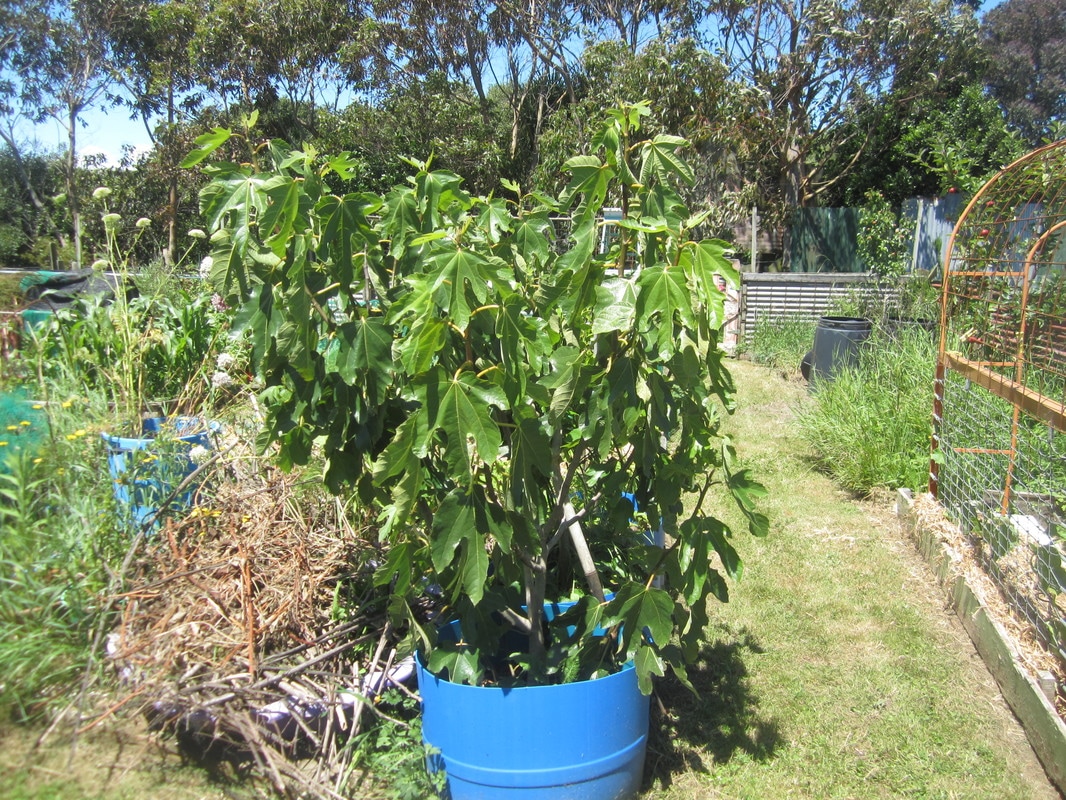
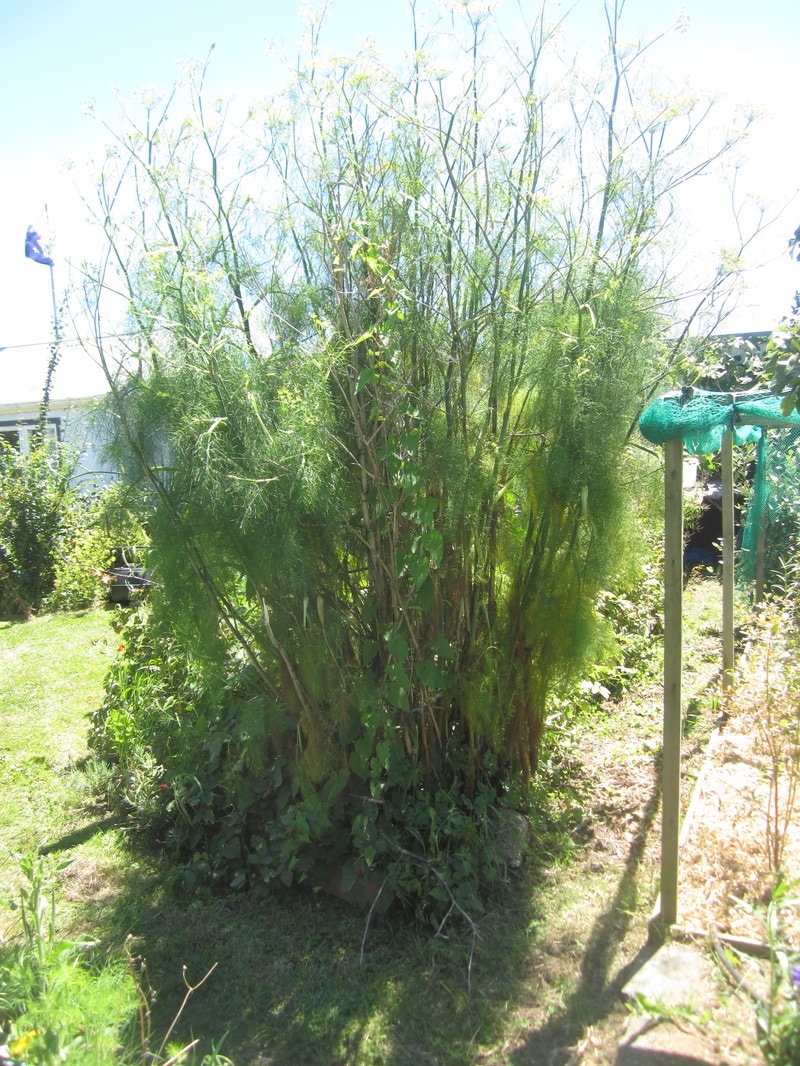

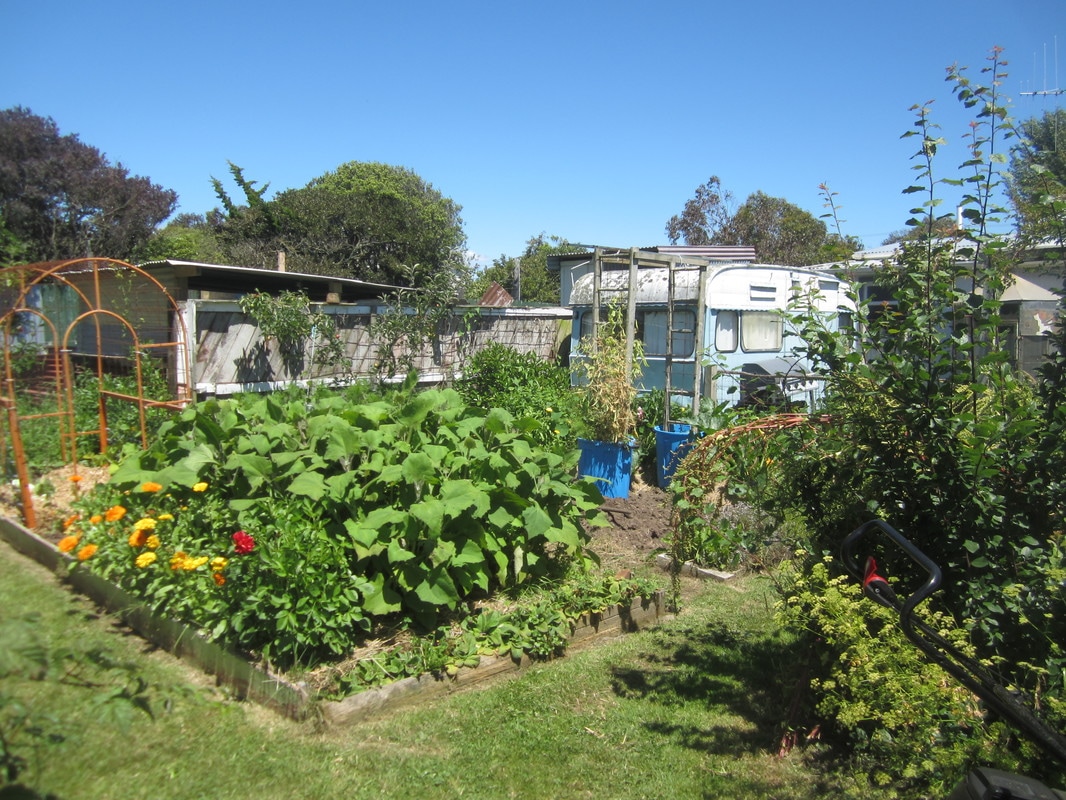
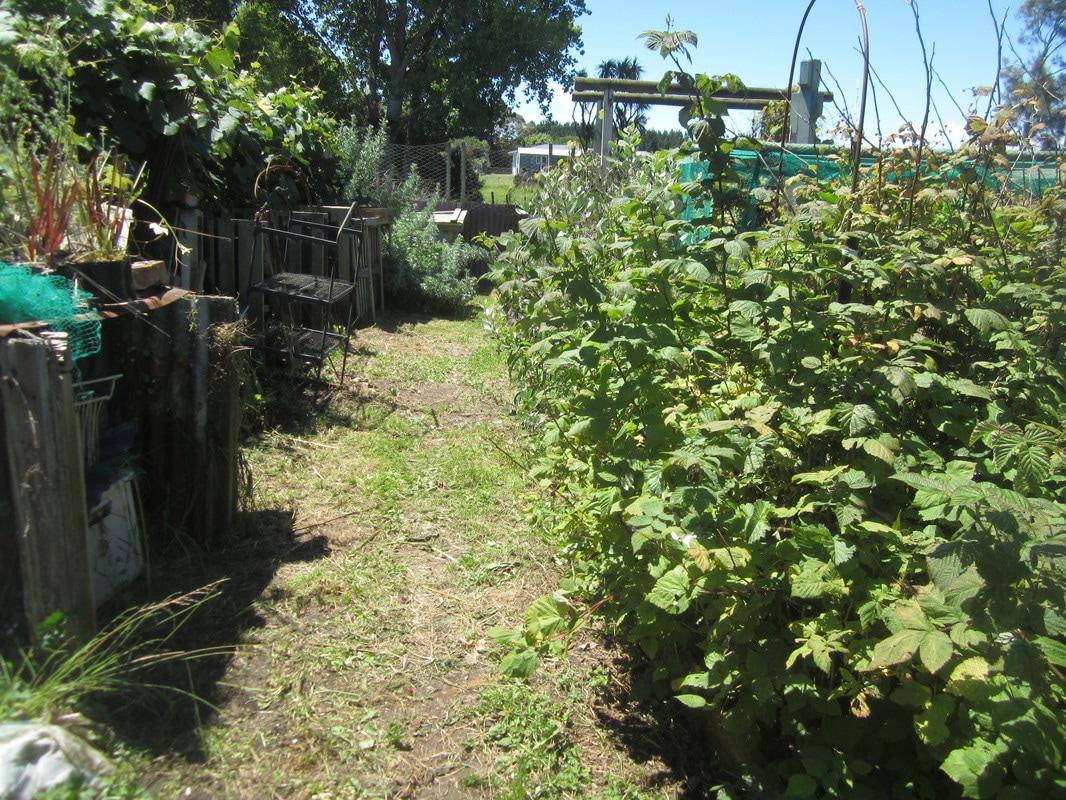
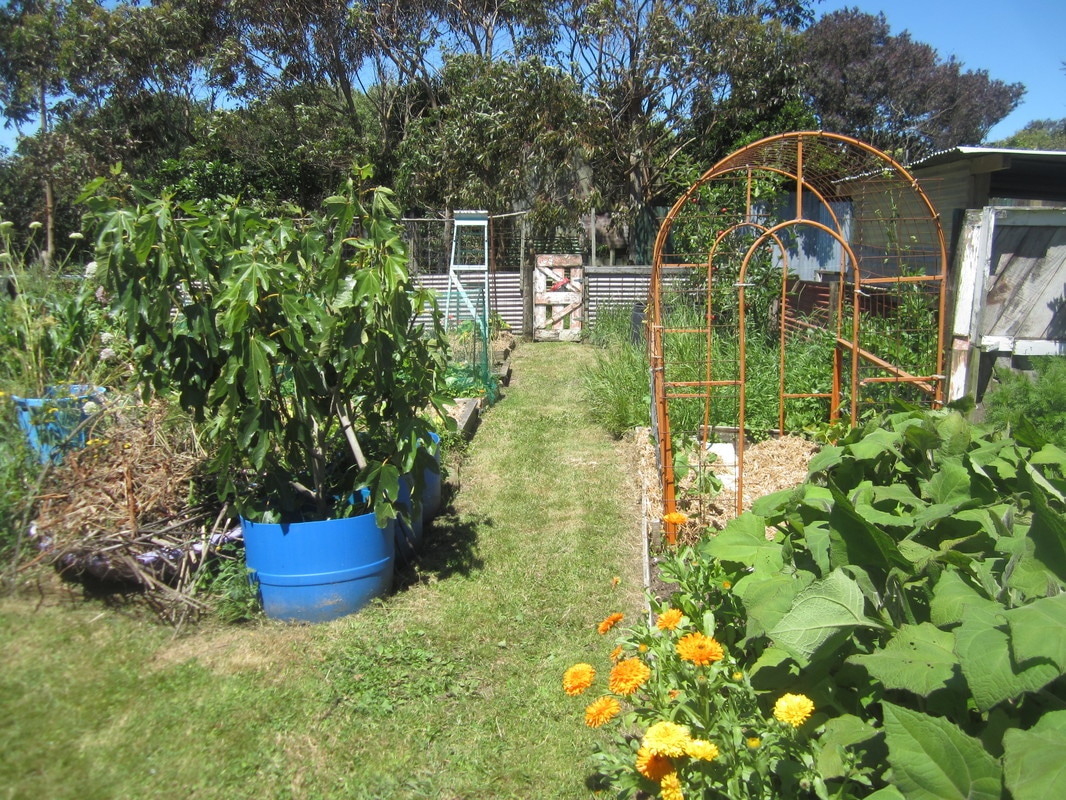
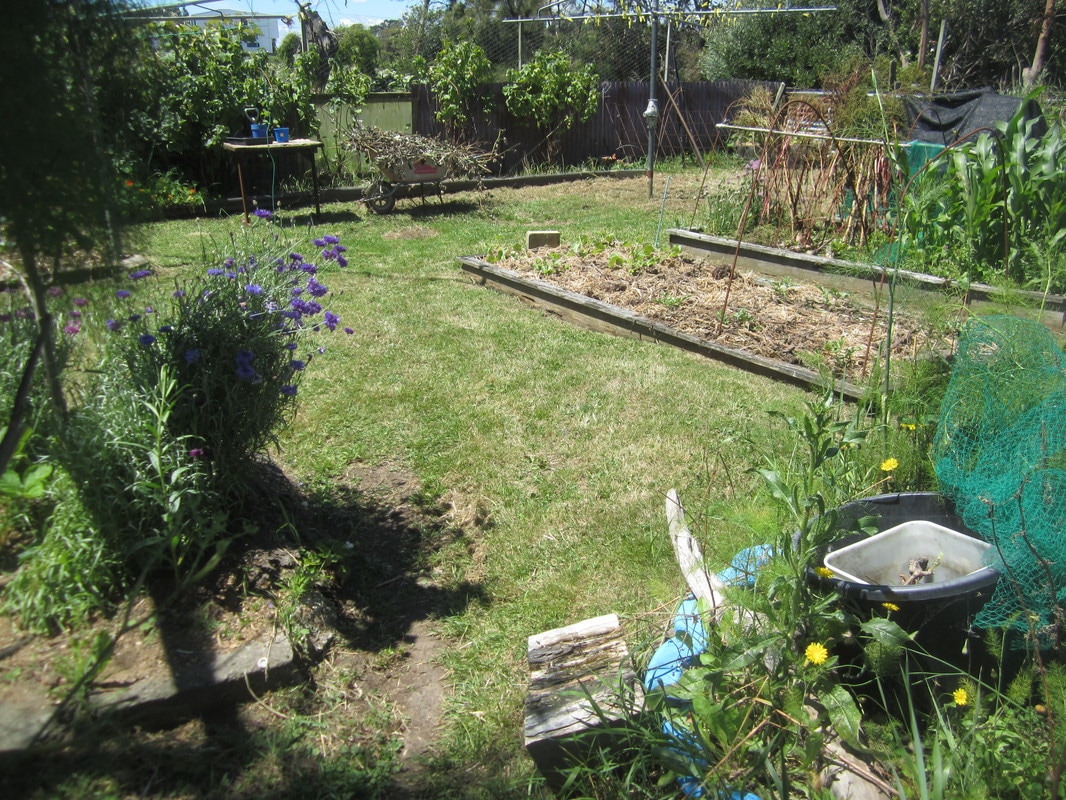
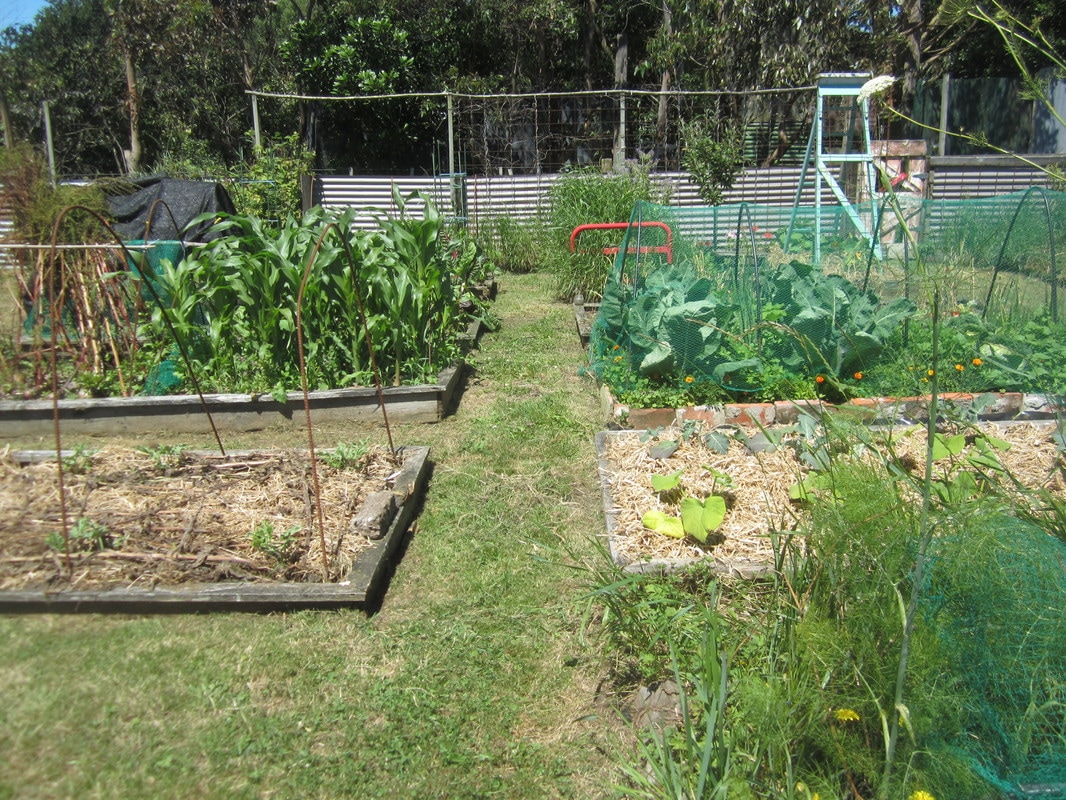
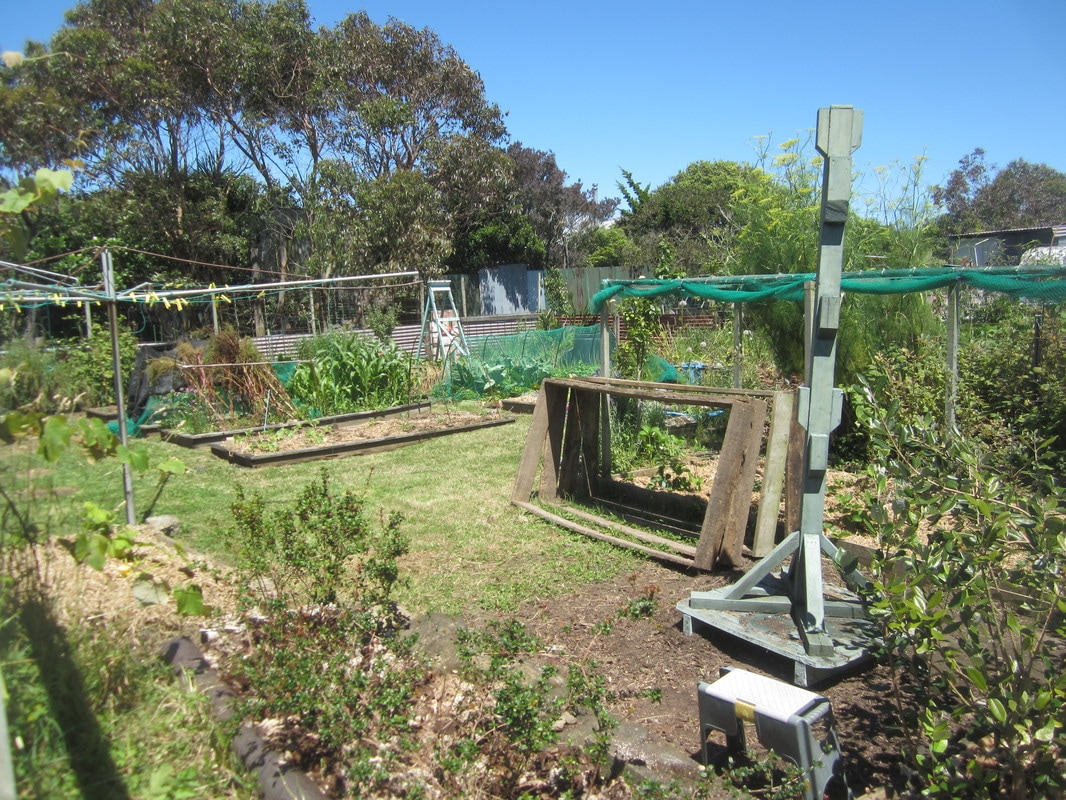
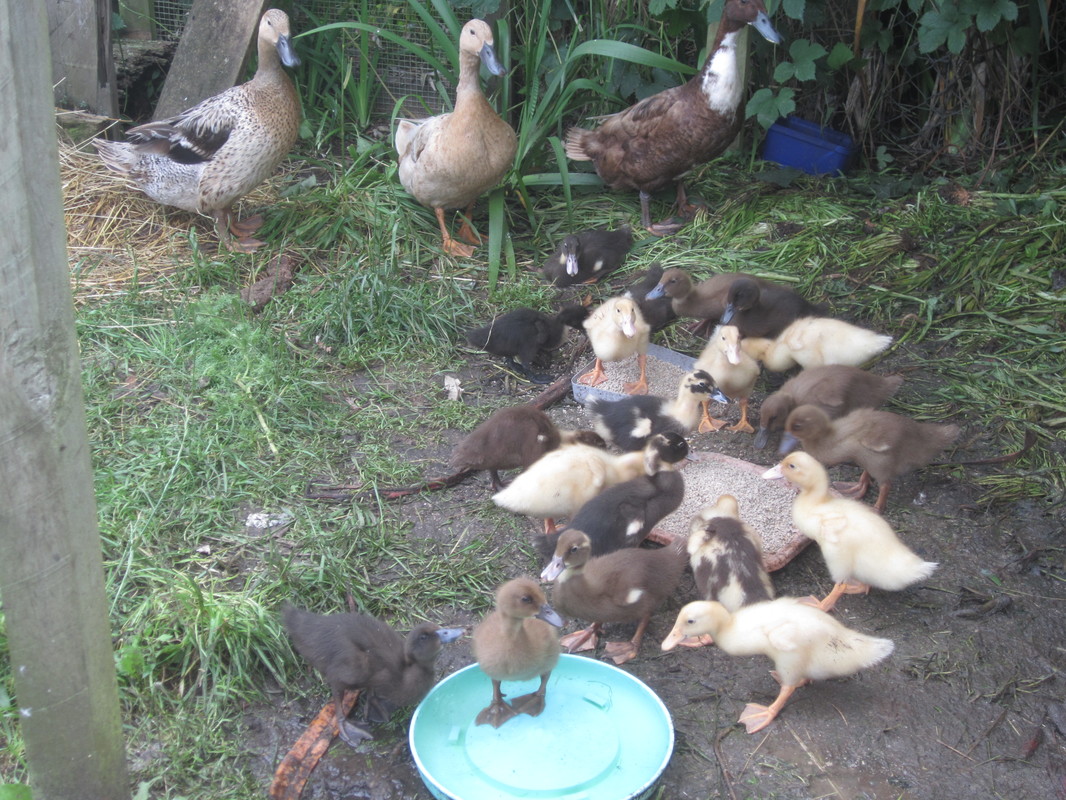
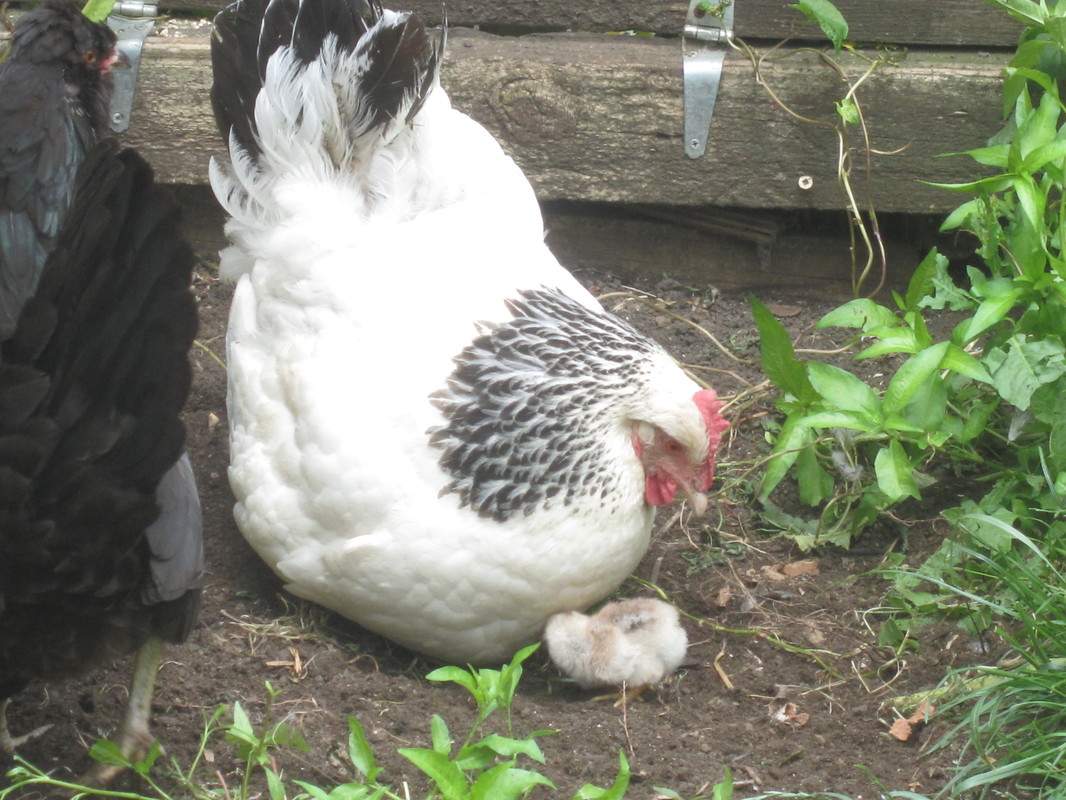
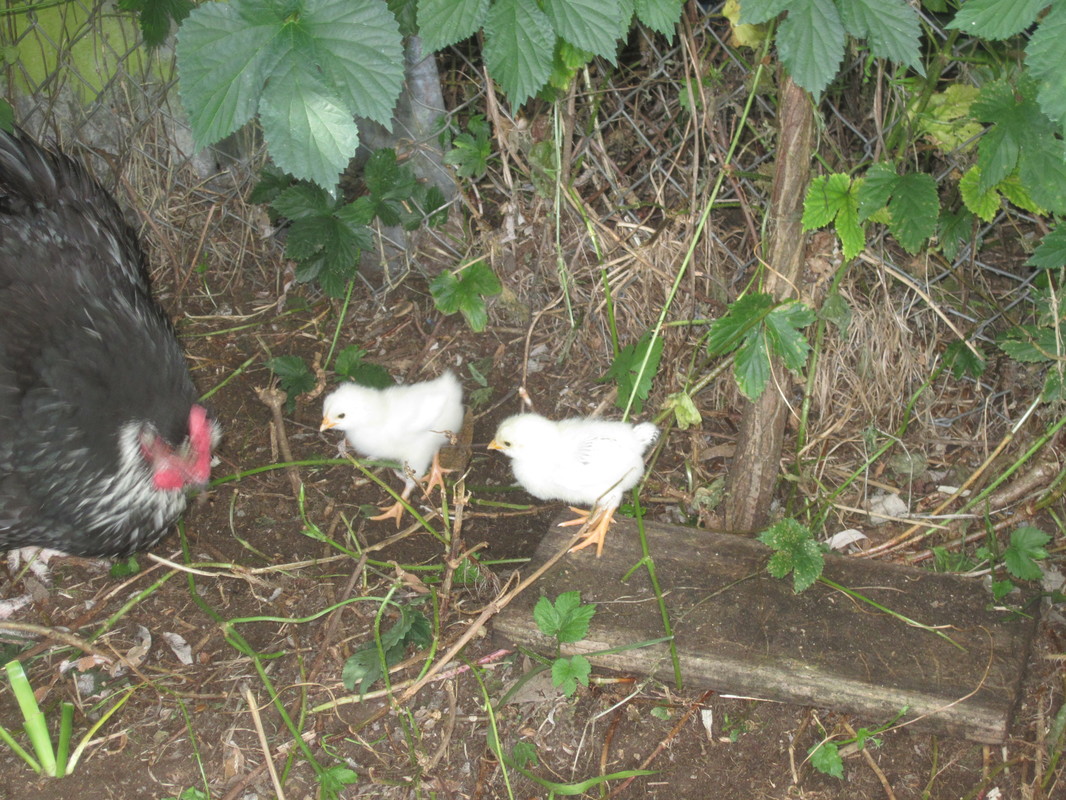
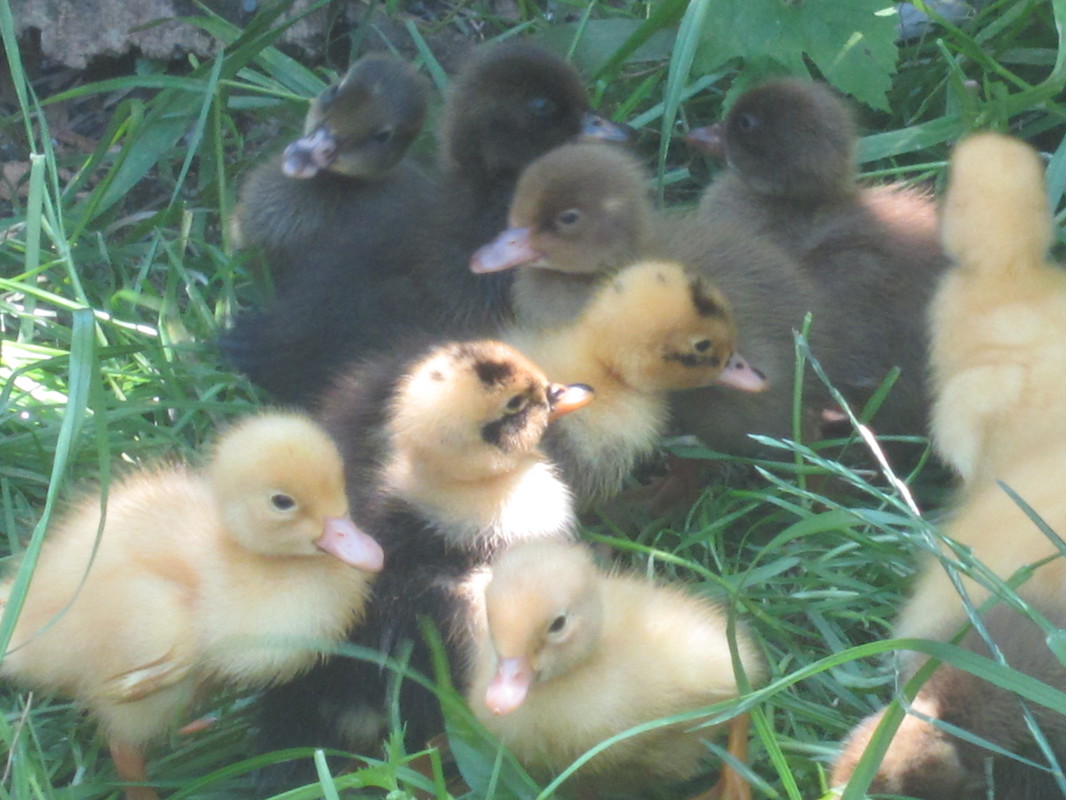
 RSS Feed
RSS Feed
